

Docking and Mooring Fees in the World

Mooring fees meaning
One of the things you’ll have to pay for during your charter or sailing holiday is mooring fees or berthing fees.
What is a mooring fee? A Mooring Fee represents a time based charge applied to all vessels for staying in a marina or harbour overnight, and connecting to their facilities such as electricity or using their water supplies, toilet facilities, ropes and pontoons.
How Much Does It Cost to Dock a Boat?
How much does it cost to dock a boat in a marina? The answer is: it depends. It depends on different factors such as the place you want to dock. Mooring fees depend also on the type of vessel you have and how much time you want to dock. We are going to clarify these aspects and give you a quick overview of how much you have to pay for docking.
To dock a boat, you need an allotted place where you can secure it. This place can be found on a pier and it is called a slip (in USA) or a berth (in Europe). Berthing or mooring a boat allows you to easily embark and disembark. Slips or berths can be found on different types of piers: main piers, finger piers or floating piers.
How much does it cost to keep a boat in a marina? The Mediterranean can be expensive because of how popular it is. The French, Italian Rivieras and Croatia are the most expensive areas.
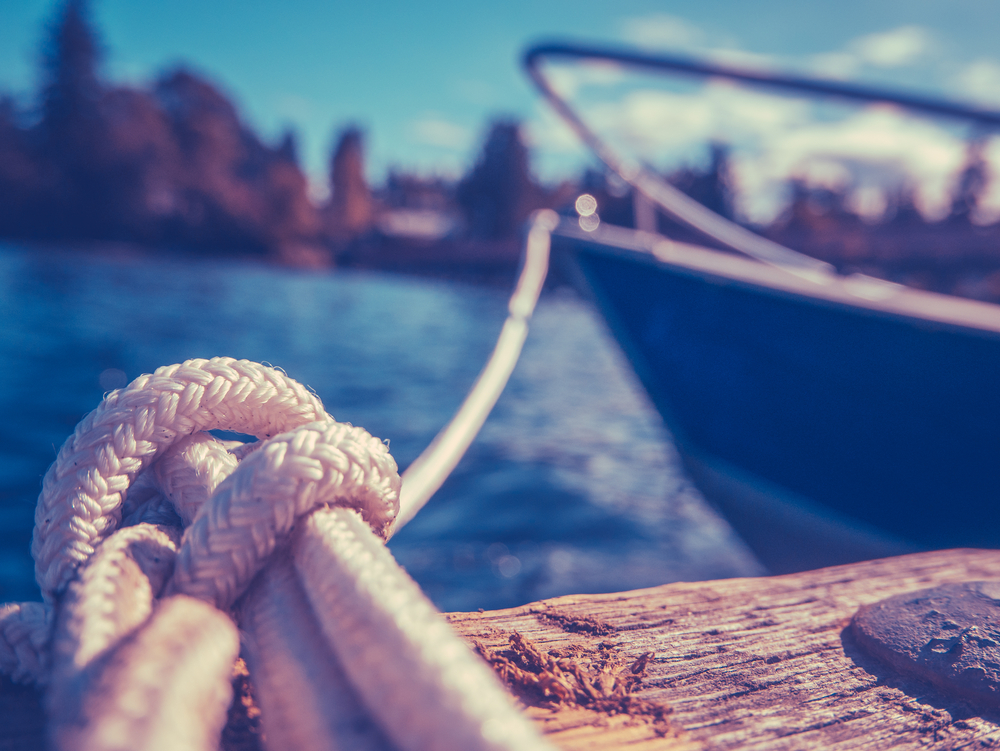
Mooring Fees
Mooring fees in the mediterranean.
Mooring fees vary a lot in the Mediterranean based on the location you choose and the time of the year you travel. The peak season is the most expensive period and it ranges from July to the beginning of September. Besides the season, the length of the boat is a factor that will always influence docking fees for boats. If you rent a docking place for the whole season or for the whole year, you will get discounts.
The busiest period in the Med is between June and the end of September – the summer season.
Southern Europe is generally expensive because the Mediterranean is one of the most popular sailing destinations. Moreover, in the high season, most locations are crowded with tourists and so are the marinas where you can rent a slip or a berth.
The western countries such as France, Italy, Spain are more expensive than Greece for example. The annual mooring costs in France vary between €135 and €1350 / m per year (€45 to €450 per ft), the most expensive port being Old Port of Saint Tropez, which is double in price compared to Port of Cannes.
The prices in Italy range between €285 – €1350 / m per year (€95 to €450 per ft).
The mooring fees in Croatia are substantially higher than in Greece. In Croatia, yacht berthing or mooring fees range between €435 – €1050 / m per year (€145 to €350 per ft.) for a high season contract.
Greece annual fees are between €225 – €525 / m per year (€75 to €175 per ft.).
Monaco is one of the most expensive destinations. A berth in Monaco costs about €1500/ m per year .
Check below the most expensive marina mooring fees in the following popular Mediterranean destinations for a 10 m boat . Some of them (Marina Capri, Port of Saint Tropez, Port Hercule, Ibiza Magna) are the most expensive marinas in Europe .
So, these are the marinas with the highest mooring fees for each country .
Mooring Fees in USA
In the USA, mooring and slip costs for regular docks vary between 12$ to 50$/ft per year. Popular locations such as Los Angeles, or Florida have higher yearly rates which start from 120$/ft and may reach up to 240$/ft. For transient mooring, the docking fees are not calculated based on the boat’s length and are 30$ on average.
Things to Consider When Picking a Mooring
When picking a mooring, there are different aspects you should take into account:
– the time of the year you want to go on holidays as prices vary accordingly
– the time of the day when your docking place is available based on the tide
– how much intimacy you want: a water mooring or anchorage enables you to enjoy the sea and the surroundings, on the other hand, a slip in a marina grants you access to many facilities
– each marina’s policy; some only allow you to dock if you pay a membership fee.
Types of Berths
Some of the basic terms you will hear in the nautical field are mooring, docking, anchorage and berth. They all refer to the same act of securing your boat in a fixed place, but let’s see the differences.
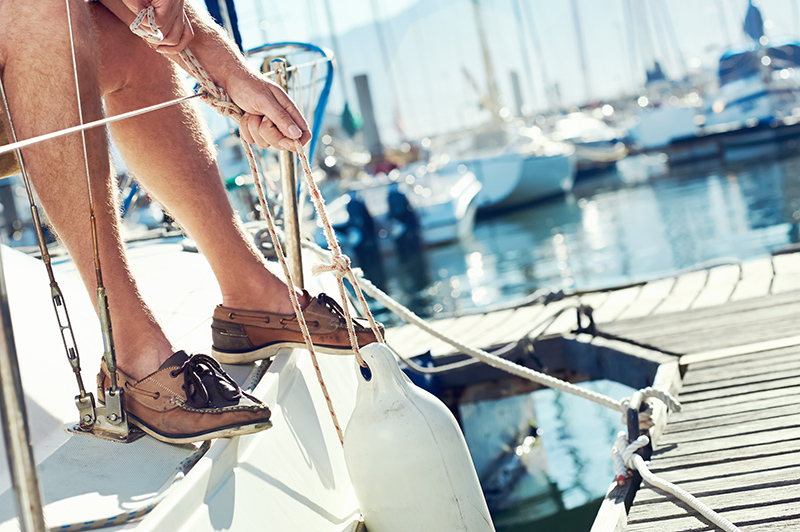
When you moor your boat, you can use an anchor to secure it against the seafloor or buoy. A mooring is a permanent place where you do this. This method allows you to keep your boat steady in one place but doesn’t enable you to access the land directly. To do this, you’ll need a dinghy.
Anchorages are places where boats may drop their anchors. Just like moorings, they don’t provide direct access to the land. but they don’t provide a permanent anchorage point either. Each boat uses its own anchor. Check out the best boat anchors .
Docking ensures direct access to the land. When you dock, you secure your boat to a fixed spot on the land. To dock, you need docking lines. The designated place where you secure your boat in a dock is a slip or berth. By analogy, docking a boat into a slip is like parking a car in a car parking.
Permanent mooring and transient mooring
If you book a docking place for the entire season, you get permanent mooring. If you book a berth per day, you get transient mooring. As you now know, there are different methods of keeping your boat steady in the water. With a little bit of practice, in no time you will be able to make the difference between mooring, docking and berthing and to maneuver your boat according to each scenario.
Berths are probably the best option if you want the maximum degree of safety and comfort. In a marina or harbour, you can find berths for any exigencies and people who are ready to assist you while mooring.
Advantages of Annual Berths
Annual berths mean that you pay an annual fee to dock your boat. The advantage is that you will pay 3 to 4 times less than you would if you rented a berth per day. Depending on the type of vacation you are planning, you might want to opt for an annual berth or not. If you plan on spending the whole time in one place, this is the best and cheapest option. Nonetheless, if you want to sail from place to place, the costs of turning back to the same docking place might be too high. In this case, transient mooring is the only choice.
Premium services
Premium services are available at different marinas. Some examples of such services are maintenance, repairs, fuel station, on-site cafés/restaurants, laundry service, Tv, Wi-Fi, wintering storage etc. If you opt for the latter, the marina will take care of your boat in the cold season, by pulling it out of the water, cleaning and storing it.
The more services are included in a marina’s ‘menu’, the higher its rates will be. However, docking at a well-provide marina might cover all your needs during your holiday
Buying a Berth
Yes, it is possible. If you want to make a berth yours, you can buy it. Not all marinas provide this opportunity, but many do. The prices vary of course based on the location of the marina and the services it provides. Buying a berth can tackle forever the problem of keeping your boat safe. Then again, this might only be an option if you like to spend a lot of time in the same area.
If you want to reduce your docking costs so that you can spend more time at sea, go in the off-season. In this period, mooring fees are up to 70% lower.
In case you own a catamaran, note that these boats may be even 20% more expensive when it comes to docking. This is due to their larger size.
Many marinas offer additional services except for the basic package: slip, water, electricity. Of course, all the additional facilities imply extra costs. In many marinas, you are also asked to pay a deposit. Also, it’s important to note that availability in the peak season is problematic especially in the Mediterranean. Therefore, you should book a berth in time to make sure your place is secured.
Docking and mooring fees are something you must definitely consider before buying a boat because together with it come more responsibilities. There are plenty other details to discuss regarding mooring costs. But it’s easier to contact us directly once you chose the location you want to sail to. Based on it, we will offer you customized advice.
Leave a Comment Cancel Reply
Your email address will not be published. Required fields are marked *

Narrowboat Nomad

How Much Are Mooring Fees for a Narrow Boat? A Comprehensive Guide
Mooring fees for a narrow boat are an important consideration for those who own or are thinking of purchasing one. These fees can vary widely depending on a number of factors, such as the location of the mooring, the length of the boat, and the facilities available at the mooring site.
In general, mooring fees for a narrow boat can range from a few hundred pounds per year to several thousand pounds per year. The cost will depend on the type of mooring, with residential moorings often more expensive than leisure moorings. Factors such as location, facilities, and demand will also impact the cost of mooring a narrow boat.
Mooring Fees for Narrow Boats in the UK
Factors affecting mooring fees.
Several factors affect the cost of mooring a narrow boat in the UK. The most significant ones include the location of the mooring , the length of the boat, and the facilities available at the mooring. The demand for moorings in certain areas can also affect the cost.
Another factor to consider is the type of mooring. Fixed moorings, which are permanent and offer more facilities, tend to be more expensive than continuous cruising, where boaters move around and moor in different locations. The size of the boat also plays a role in the cost of mooring, as larger boats require more space and may incur extra fees for electricity and water supply.
Average Mooring Fees in the UK
The cost of mooring a narrow boat in the UK varies depending on the location and type of mooring. On average, a mooring fee for a narrow boat can range from a few hundred pounds to several thousand pounds per year.
For example, residential moorings in cities such as London and Bristol can cost upwards of £10,000 per year, while moorings in more rural areas can be less expensive, averaging around £2,000 per year.
Boaters can also opt for cheaper options, such as free mooring spots or anchorages, but these may not offer the same facilities as paid moorings and may require additional costs for supplies and equipment.
Overall, the cost of mooring a narrow boat in the UK can vary greatly depending on several factors. Boaters should research their options and consider their budget and lifestyle when choosing a mooring location.

When it comes to mooring fees for narrow boats, several factors come into play. These factors can affect the amount you pay for mooring your boat. In this section, we will explore the most significant factors that affect mooring fees.
The location of the mooring is one of the most significant factors that affect mooring fees. Mooring fees in popular locations such as London or Oxford tend to be more expensive than in less popular locations. The cost of mooring in a marina will also vary depending on the location.
Type of Mooring
The type of mooring you choose will also affect the amount you pay in mooring fees. Permanent moorings are typically more expensive than visitor moorings. Visitor moorings are usually cheaper and are ideal for those who only need to moor their boat for a short period.
Boat Length
The length of your narrow boat is another factor that affects mooring fees. Longer boats will generally cost more to moor than shorter boats. The mooring fees for boats over 60ft can be significantly higher than for boats under 40ft.
The facilities available at the mooring site can also affect the mooring fees. Moorings with facilities such as electricity, water, and Wi-Fi tend to be more expensive than basic moorings. The facilities available at the site will also affect the cost of mooring.
In summary, the location, type of mooring, boat length, and facilities are the most significant factors that affect mooring fees for narrow boats. When choosing a mooring, it is essential to consider these factors to ensure that you get the best value for your money.
Canal and River Trust
The Canal and River Trust is a charity responsible for the maintenance of 2,000 miles of waterways in England and Wales. They provide mooring spaces for narrow boats at various locations across their network. The mooring fees charged by the Canal and River Trust vary depending on the location and the length of the boat.
According to their website, the average mooring fee for a narrow boat on a Canal and River Trust mooring is around £1,000 to £1,500 per year. However, this figure can vary significantly depending on the location of the mooring and the services provided. For example, moorings in popular tourist destinations such as London or Bath can cost significantly more than those in less popular areas.
Private Marinas
Private marinas are another option for narrow boat owners looking for mooring spaces. These marinas are privately owned and operated and offer a range of services and facilities to their customers. The mooring fees charged by private marinas can vary significantly depending on the location, the facilities provided, and the level of demand.
On average, the mooring fees for a narrow boat in a private marina can range from £1,500 to £3,000 per year. However, some marinas charge significantly more than this, particularly in popular tourist destinations or areas with high demand for mooring spaces.
It’s important to note that the fees charged by private marinas can vary significantly depending on the level of services provided. Some marinas offer basic facilities such as water and electricity, while others provide additional services such as laundry facilities, shower blocks, and boat repairs.
In conclusion, the average mooring fees for a narrow boat in the UK can vary significantly depending on the location, the services provided, and the level of demand. While the Canal and River Trust provides mooring spaces at a lower cost, private marinas offer a wider range of services and facilities at a higher cost.
Similar Posts

Narrowboat Blacking Cost: How Much Should You Expect to Pay?
Narrowboats are a popular choice for people who want to explore the UK’s canal network. However, owning a narrowboat requires regular maintenance, including blacking the hull. Narrowboat blacking is the process of applying a protective coating to the hull to prevent rust and corrosion. The cost of blacking a narrowboat can vary depending on the…

Narrowboat Mortgages: How to Finance Your Dream Lifestyle on Water
Narrowboat mortgages are a type of loan that allows individuals to finance the purchase of a narrowboat for personal or commercial use. Narrowboats are long, narrow boats that are designed for use on canals and waterways. They are popular in the UK and are often used as a way to explore the country’s waterways. Narrowboat…

How much does narrowboat insurance cost? An essential requirement.
Narrowboat insurance is an essential requirement for anyone who owns a narrowboat. It is designed to protect the owner from financial losses that can arise from accidents, theft, or damage to the boat. The cost of this insurance can vary depending on a number of factors, including the type of boat, its value, and the…

Narrowboat Lighting: Tips and Ideas for an Amazing, Cosy and Functional Space
Narrowboats are a popular choice for those who enjoy travelling on the waterways of the UK. These boats are designed to be long and narrow, making them ideal for navigating the narrow canals and waterways. One aspect of narrowboat design that is often overlooked is the lighting. Proper lighting is essential for creating a comfortable…

How Do Canal Boats Turn Around? A Comprehensive Guide
Canal boats are a popular mode of transportation for both leisure and commercial purposes; but how do you turn around? However, navigating these boats can be challenging, especially when it comes to turning them around. Turning a canal boat around requires a specific set of skills and techniques that are unique to this type of…

Gangplanks for Boats: A Comprehensive Guide
Gangplanks are an essential part of any boat or yacht. They are a simple but crucial piece of equipment that allows safe and easy access to and from the vessel. Gangplanks come in a variety of shapes and sizes, and can be made from a range of materials including wood, metal, and plastic. Boat owners…
Leave a Reply Cancel reply
Your email address will not be published. Required fields are marked *
Save my name, email, and website in this browser for the next time I comment.
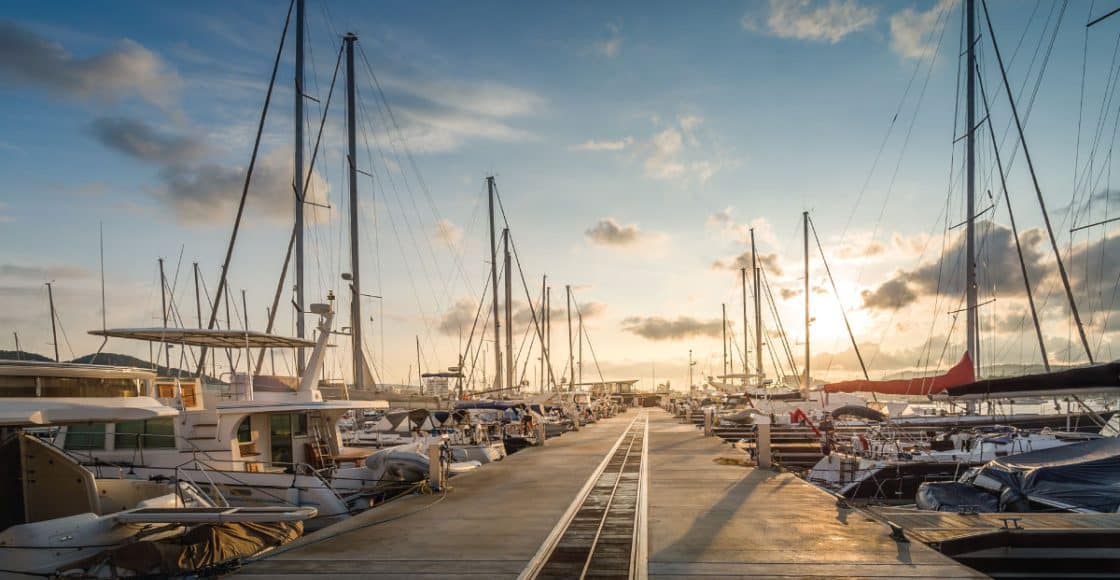
Marina Fees & Boat Slip Pricing Explained

Table of Contents
Buying a boat is only part of the investment when it comes to enjoying life on the water. Just like a car, RV, or house, boat owners, too, have expenses that can be offset by renting out their vessels . One of the biggest questions boaters ask is how much it costs to keep a boat in a marina. Marina fees, boat slips, and all. We go over it all in this post: Marina Fees & Boat Slip Pricing Explained :
- Mooring options
- Quick access to our waterways
Boat slip pricing on a sliding scale
- Boat insurance
List your boat & start earning an avg. of $20K yearly with Boatsetter
Mooring options: Trailering, boat slips, & buoys
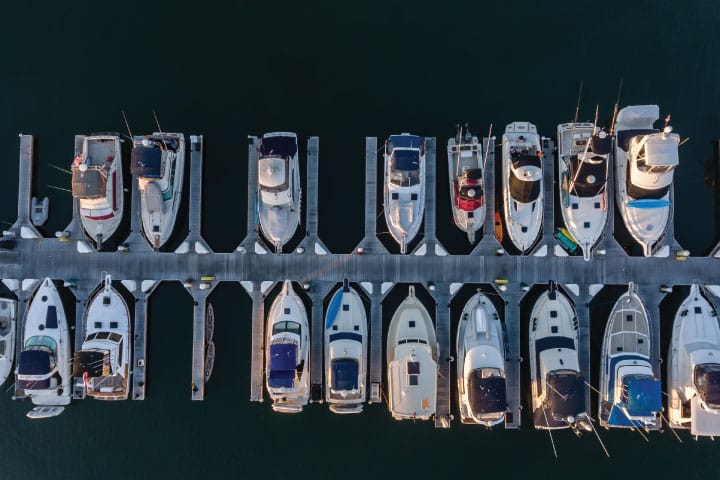
While smaller boats can be kept on a trailer to cut ownership costs and make it easy to move the boat to different locations to fish, ski, snorkel, or enjoy a day in the sun, larger boats are kept in the water by renting space in a marina known as a “boat slip.”
Boat slips are not to be confused with a “boat dock,” which is open on three sides, allowing you to dock your boat along a strip of land rather than an enclosed slip.
There are other options for both boat classes as well. Some boats can be kept tied to a “mooring buoy,” a big, sunken weight that acts as an anchor, typically provided by the marina.
Smaller boats can also be kept in a marina’s “rack storage system.” It is just as it sounds, large metal racks provide spaces for boats to be stored either inside or out, kind of like boat “condos.” This is also known as the “launch on command” service.
The boat is kept in the rack until the owner wants to use it. Then, the marina picks the boat up from the rack with a large forklift and sets it in the water, where the owner takes it out for the day.
Each storage method comes with different costs, and all have their pros and cons.
Pro Tip: Another way to offset boat ownership costs is by renting it out on your non-boating days. Platforms like Boatsetter will get you connected to vetted renters and facilitate things like communications. Boatsetter boat owners make an average of $20,000 annually by renting out their boat(s). List your boat here .
Quick access to our waterways is everything
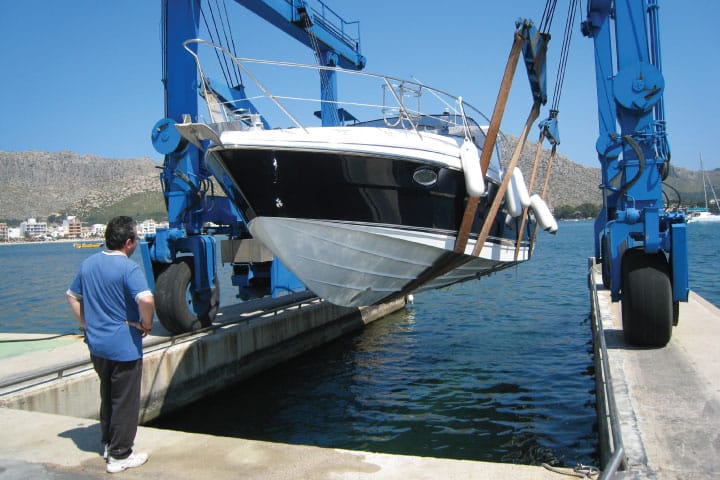
While trailering a boat reduces costs, it can also reduce spontaneity by making it harder to go for a ride without planning and preparation. Rack storage costs more than trailering a boat but makes launch and recovery easier for the owner because the marina does all the work.
One thing to remember about using the rack storage system is that it requires the owner to make arrangements in advance and during working hours to have the boat ready and waiting.
Any sized boat can be kept in a slip where it is easy to access, can be used at any time of the day or night, and only requires the owner to plan what kind of drinks, snacks, and music to enjoy while out on the water with friends and family.
For owners who slip their boats, going for a cruise can be as easy as walking down the dock, firing up the engines, and going for a ride. However, boat slip prices can be one of the biggest expenses that boat owners face. So, how much does it cost to rent a boat slip?
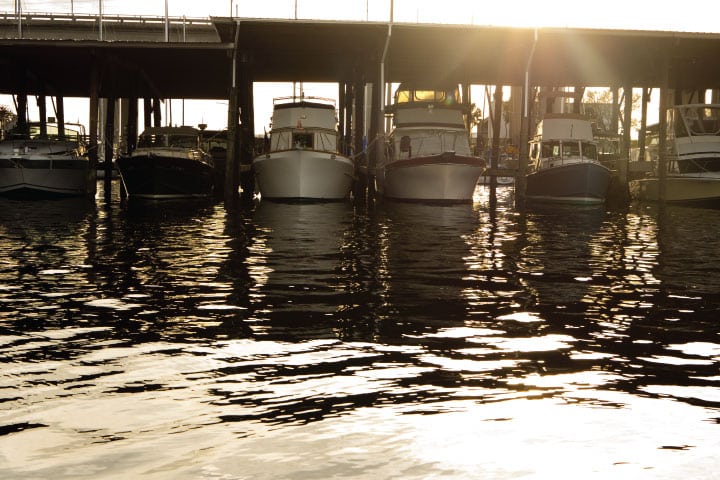
Marina prices for all types of boat storage can vary from one geographic location to another but are usually charged according to the length of the boat or by the length of the slip, or the storage space itself.
Although there can be other variables as well, rack storage costs for a 25-foot boat can run around $2500-$3000 for the season. For the same 25-foot boat, a slip in a marina can cost $3000-$4000 for the summer season.
In warmer climates like South Florida , many marinas offer year-round rates. Some Florida marinas charge by boat’s linear foot for each month, so the same 25-foot boat slip can cost $18 to $22 per foot per month.
In colder climates, boat owners must also cover the cost of either outside storage, which requires that the boat is winterized to protect engines and water systems from the cold, or inside heated storage, which is more expensive but does not require that the vessel is winterized.
Winter storage costs can often be the same as the slip costs or more for indoor heated storage.
There are other charges boaters need to consider. Marinas around the country have begun requiring boat owners to carry Protection and Indemnity insurance. or P&I, on their vessel to protect the marina from the costs associated with collisions, damage, sinking, and even environmental impacts from oil and fuel.
READ MORE: Boat Ownership 101: Common Mistakes & How to Avoid Them
Keeping it safe: You and your boat
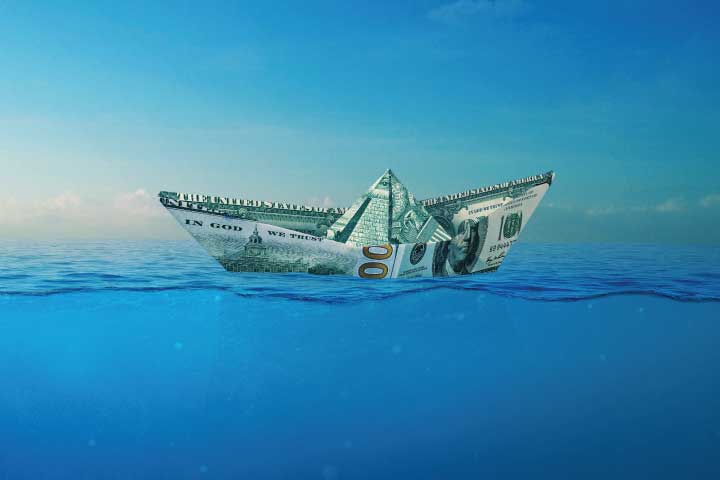
The costs for “Protection and Indemnity Insurance” (or P&I Insurance) can also vary from vessel to vessel, so the best option is to call your insurance provider for a quote.
P&I Insurance is a liability insurance specifically designed to address the unique needs of the marine industry. You can learn more about insurance for your boat rental in this post .
Pro Tip: Boatsetter is currently the only boat rental marketplace online in partnership with GEICO Marine Insurance providing boat owners with an exclusive policy for their boat rental business. Learn more about Boatsetter’s Peer-to-Peer Boat Rental Insurance Policy .
Like any sport, hobby, or lifestyle, boating has its associated costs but the trade-off is worth every penny. Just like a house, your boat needs a place to park, maintenance, and insurance. However, turning the key in your front door won’t start the engine so you can go for a cruise in the sun.
Boatsetter is a unique boat-sharing platform that gives everyone — whether you own a boat or you’re just renting — the chance to experience life on the water. You can list a boat , book a boat , or make money as a captain .
List. Rent. Earn— Only at Boatsetter

Chuck Warren fell in love with boats at 9 years old while helping to restore his grandfather’s 1939 44-foot Elco cruiser. A lifelong boater, Chuck has experience operating large and small vessels on the waters of the Atlantic, Gulf of Mexico, Caribbean, and the Great Lakes.
During his 35-year marine industry career, Chuck has been the driver for several offshore powerboat racing teams, the chief engineer aboard a Caribbean research and salvage vessel, captain of a Florida Keys sunset cruise, and more.
Today, Chuck is a boating industry writer, copywriter, and captain who lives on his 40-foot boat in the summer when he isn’t delivering vessels around the Great Lakes or teaching new boaters to drive. Winters are split between the West Michigan lakeshore and wherever his travels take him.
Browse by experience

Explore articles
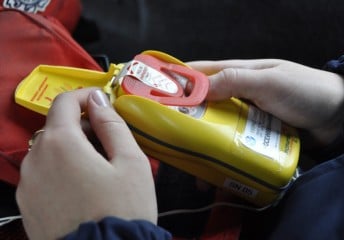
Florida senate approves new boating law, drops anchor on governor’s desk
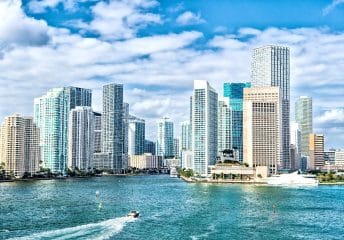
Top 3 Miami Boating Itineraries to Try
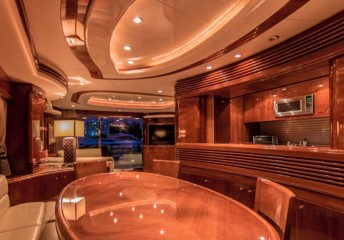
Private boat rentals inspire custom boating experiences

5 Best Lakes in Tennessee for Boating

- October 29, 2022
Everything You Need to Know About Mooring Fees
Are you puzzled about how Mooring fees are calculated? Do you need help unraveling what appears to be a mystery regarding mooring fees? This article is for you. We understand that sometimes boaters get confused when told what to pay for mooring; therefore, in this post, the steps and factors that lead to the pricing will be discussed in clear terms.
You can save the page to return to it later if busy but make sure to read till the end because every section is important.
Are you looking for information about private mooring fees?
Search no more. Corleone Marinas will update you with all the answers you have been looking for about mooring fees.
Corleone Marinas provides various top-quality yacht services to ensure your boating trip is as pleasurable as possible. Our facilities are first-rate, and our dedication to customer service is unparalleled. Visit us now and see why we are Sydney’s most excellent marina.
Corleone Marinas will provide you with Everything you need to make the most of your time on the water.
Book your mooring needs at Corleone Marinas in Sydney Harbour!
Corleone marinas with private mooring licenses.
If you plan to moor your yacht on navigable waters in NSW, you must acquire an annual private mooring license. The rules concerning these licenses can be tasking in several ways, but they must be adhered to. Noncompliance with the requirements may result in the termination of your license, which will not be pleasant.
You may moor your boat at Corleone Marinas while exploring Sydney’s beautiful waterways. Because of our convenient locations, affordable pricing, and round-the-clock security, your visit will be peaceful and pleasurable.
Marina Berths or Mooring Site: What is it?
What exactly is a marina berth.
Marina Berths allow leisure or recreational craft owners to get on and off their vessels. They are frequently designed with modular features to adjust the berth size for different shapes and sizes of recreational vessels.
What exactly is mooring?
Any permanent structure to which a vessel may be fastened is called mooring. Some examples are quays, wharfs, jetties, piers, anchor buoys, and mooring buoys. A ship is moored to prevent it from moving freely on the water.
Find top-quality mooring and marina berth at Corleone Marina.
The Types of Moorings available at NSW
Private moorings.
This type of mooring allows you to anchor your boat in navigable waters as an individual or as a family. Permission to moor privately must be acquired from the landowner or harbor authorities. It is renewed every year. It cannot be transferred. There is no assurance of tenure, and the permit does not constitute a lease of the seabed. The buoy is frequently yellow in color.
Commercial and club moorings
Commercial and club mooring licenses are only provided to businesses that conduct business or provide marine-related services. Commercial moorings are used by businesses such as charter firms for their ships. Boating services can be provided to members of the general public or to a recognized organization, such as a boating club. It is renewed yearly, the same as the private mooring license. Commercial vessels frequently use orange buoys, whereas club vessels use red buoys.
Emergency moorings
It is used in emergencies to retain, store, or keep vessels. To be qualified to moor your boat in an emergency, you must first obtain permission from the appropriate authorities. Blue buoys are used for emergency moorings.
Public or courtesy moorings
This is a temporary mooring, and it is open to the public. The NSW government or the Sydney Harbor Authority is in charge of it. NSW Transport provides free courtesy moorings. This kind enables anybody to temporarily dock boats in popular boating areas. This kind of moorings can be used or occupied without permission; however, an establishment charge may apply. It may also be used by domestic and commercial watercraft; however, it must not be left unattended. Even though it is free, just one vessel may be moored at a courtesy mooring. Pink buoys are used for courtesy or public moorings.
Hybrid environmentally-friendly moorings
This is relatively new and still in the beta phase. It is a type of mooring that is designed to be more environmentally friendly. Currently, four Hybrid-Environmentally Friendly Moorings have been constructed at strategic sites around Shoal Bay. Hopefully, in the future, they’ll be available everywhere.
Services Provided by Corleone Marinas
Corleone Marinas is the most trusted and reliable marina in Sydney. We are a one-stop brand that stays committed to providing the best for every boat owner. Services available at our different marinas include wet berths, moorings, and slipways for boats up to 60 feet deep water.
With our service, your yacht can be moored at any time of the day because we are open every day of the week. If your vessel has any fault that needs professional hands, at our marina, experienced and results-producing shipwrights and mechanics are available on-site just for you.
Other services provided by Corleone Marinas are:
- Managing Berth Rental Services
- Providing quality daily assistance to clients
- Professional consulting and on-site staffing
- Marketing and promotional activities
- Government legislation & Environmental regulations
- Accounting and Reporting
Bring your boat to our marina and enjoy your exploration.
Facts You Should Know About Mooring Fees:
The cost of mooring varies from location to location, and boat mooring rates are determined by the facility, amongst other factors. The prices of these moorings are determined by various charges. Such charges include license fees, mandatory insurance payments, mooring fees, and additional costs. Maintenance and service expenses are also crucial aspects.
Major factors that influence mooring fees
In general, there are several packages to pick from, each of them differing in price. In addition, the length of the boat and the amount of protection demanded by the boat’s owner are factors. A marina with fewer amenities may be less expensive than one with full-service amenities. Insurance costs are included in the fixed cost of moorings. This is necessary to defend against any unforeseeable occurrences.
Mooring fees are also majorly affected by the cost of engine fuel, the facility’s location, size, and ownership status. A high cost of engine fuel implies a rise in cost and vice versa.
Everything you need to know about private mooring license
A yearly private mooring license permits you to anchor your vessel in navigable waterways. A charge is associated with the application, and your request may be placed on a priority waiting list based on availability.
You must meet the following criteria to qualify for a private mooring license.
- You must have a boat.
- Your boat’s registration must be valid
- You must be the registered owner of the boat to be attached to the mooring
Information and documents you must have for a flawless private mooring license registration.
- Valid full proof of identity
- Your bio, including personal and contact details
- The mooring location
- A recent photo of the vessel
- The specifics of your vessel
- Credit card details for payment
What makes Corleone Marinas Sydney worth visiting?
Excellent security: One of the most significant advantages of mooring your boat at Corleone Marina is that we provide impenetrable security, ensuring peace of mind for all boaters. This includes strong and strict security measures such as closed gates, video cameras, and alarm systems to keep boats safe and secure.
Less wear and tear: Another significant benefit of mooring your boat at Corleone Marina is that it can save wear and tear on your vessel by providing better shelter from the weather throughout the fall and winter months. Instead of leaving your boat floating in the sea, anchoring it with us protects the surface and engine components from exposure to severe temperatures, which can reduce performance and cause repair concerns.
Convenience: Our location is conveniently accessible and stress-free. Boat owners will find mooring at Corleone Marina a highly convenient choice. You may access your boat whenever you want while it is moored at our marina. We use cutting-edge technology to make it simple for boat owners to get to their boats and get out on the lake without the effort of loading up a boat, driving it to a ramp, and lowering it into the water before taking it out.
Service: At Corleone Marina, we offer a full range of boating services to ensure that boat owners have all they need to enjoy their time on the water. When you park your boat at our marina, you can be certain that you will have access to all of the services you require at all times, including boat maintenance and repairs.
For longer stays, we provide discounts and rates that are competitive. So why are you still waiting? Visit us right away! We are eager to have you visit Corleone Marinas.
6 Activities You Can Do At Corleone Marinas Sydney
There is always plenty to do at Corleone Marinas, whether you are a seasoned sailor or a first-time visitor.
Here are our top six recommendations for having a wonderful time in Sydney.
- Explore Sydney from the waters by taking a ferry ride around the port.
- Visit the Look Out Cafe and treat yourself to a nice cup of coffee and a sumptuous meal.
- If you want something recreational and relaxing, head to Palm Beach for swimming, surfing, and sunbathing.
- You can treat yourself to a picnic at the Royal National Park, located just south of Sydney.
- The Royal National Park is also a great place to hike; if you are up for it, go there without delay.
- Explore Long Island if you are seeking adventure.
Whatever you want to do, Corleone Marinas is the ideal starting point for your Sydney journey. Visit us right away! We can’t wait to meet you.
Frequently Asked Questions
Q: does fuel price affect mooring.
A: Yes, it does. If it’s low, you’ll be required to pay lesser fees and vice-versa
Q: What is the maximum vessel length allowed at your marina office?
A: The maximum vessel length allowed at our marina office is 15 meters.
Q: When do you close?
A: Corleone Marinas is available every day round the clock. Come anytime, and we will get your vessel safely and securely moored.
Final Thoughts
Mooring fees are not just arrived at by mere head calculations. A variety of factors are involved. Also, all marinas don’t charge the same. Some charge less and provide poor-quality mooring service.
To get the most professional, trusted, and affordable mooring in the whole of Sydney, The Corleone Marinas is your go-to spot. Our service is fast and flawless. With on-site shipwrights and mechanics, you have access to quality repairs and maintenance.
Our marina services include wet berths, moorings, and slipways for yachts up to 60 feet.
Contact us for more information. We will be glad to assist.
Latest Posts

The Ultimate Guide to NSW Boating Rules
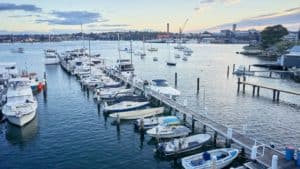
Barbecue On A Boat? Yes, It Can Be Done
Our marinas, elizabeth bay, long island, don’t stop here, more to explore.
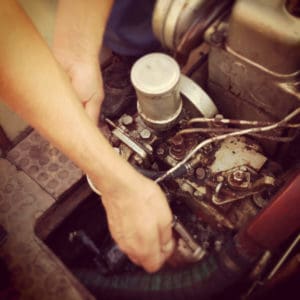
My Boat Engine Won’t Start, What’s The Problem?
Whether you’re out for an afternoon of leisure with family in the marina, or you’re in the great open ocean and ready to head back after a long day, no one wants to turn the ignition key to be met with nothing but a churning noise, or even worse, nothing at all! Here are some
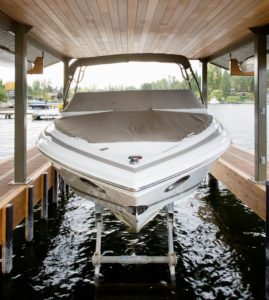
What Exactly Is Deadrise And How Does It Affect My Boat?
In general, most boat hulls are constructed in a V-shape. These angled hulls allow the ship to drop below the surface and cut through water and waves at speed. The sharper the angle, the more a ship can slice through the water and keep the ride buttery smooth. The general idea is that Deadrise is
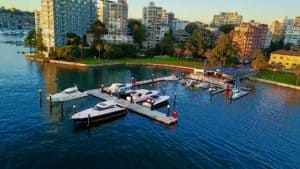
Boat Propellor Maintenance, What you Need to Know
Whether you have a motor yacht or a sailing yacht, you probably have an engine that drives a propellor. You know that your boat and boat engine need regular maintenance, still, many yacht owners and even yacht charterers are unaware of how and why to maintain a propellor. Whether you have an inboard diesel engine
LET'S GET YOU OUT ON THE WATER
Sydney's premium harbour locations.

Corleone Marne Services Acknowledges Aboriginal And Torres Strait Islander Peoples As The Traditional Custodians Of The Land, Rivers And Sea. We Acknowledge And Pay Our Respects To The Elders Past, Present All Of Our Marinas Are A Safe Spaces Free Of Discrimination Or Fear; A Space, Free Of Bullying And Harassment Of Any Kind. We Will Work Together Honouring Our Differences And Celebrating Our Strengths, Individual Qualities And Contributions; Upholding The Values Of Trust, Respect And Confidentiality.
CMS Is Dedicated To Providing A Harassment-Free Environment For All Employees, Regardless Of Gender, Gender Identity And Expression, Sexual Orientation, Intersex Status, Disability, Ethnicity, Or Religion. We Do Not Tolerate Bullying And Harassment In Any Form. We Are Committed To Building A Diverse And Inclusive Workplace. We Pledge To Cultivate A Workplace Culture That Is Safe, Accessible, Fosters Inclusiveness, Promotes Diversity And Celebrates The Unique Skills And Qualities Of All Our Employees.
At Corleone Marinas, We Recognize Our Responsibility To Help Protect The Planet. We Are Committed To Minimizing Our Impact On The Environment And Supporting Those Who Are Working To Improve Global Environmental Sustainability. W-E’re Committed To Reducing The Impact Our Company Has On The Environment. We Care About Sustainability, And Are Continually Working To Improve Our Environmental Performance Through The Introduction And Advancement Of Policies, Procedures, And Work Practices That Allow Us To Deliver A Brilliant Service With Limited Environmental Impact. Introduction And Advancement Of Policies, Procedures, And Work Practices That Allow Us To Deliver A Brilliant Service With Limited Environmental Impact.
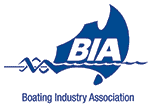
© 2024 Corleone Marinas. All Rights Reserved. Site by Creative Clarity

- (954) 633-4878
- [email protected]
Gulfstream news
- February 1, 2024
How to Plan for Yacht Docking and Mooring

As a yacht owner or someone in love with the nautical lifestyle, you understand better than anyone the importance of a safe harbor. Whether it’s anchoring off a secluded beach or mooring in an exclusive marina, the place you dock is often as crucial as the journey itself. Mastering the nuances of docking and mooring is key to ensuring that your yacht is secure and accessible for your next voyage. Here’s how to plan for these essential aspects of yacht ownership.
Understanding Docking and Mooring Basics
Docking and mooring are not just about securing your yacht; they’re about protecting your investment and ensuring the longevity of your marine sanctuary. Whether you plan to set anchor for a few hours or spend the entire season at a marina, it is important to consider several factors:
- Location and Accessibility: Marinas with prime locations near popular destinations or essential services often come at a premium but can provide unparalleled convenience.
- Facilities and Amenities: High-end marinas offer amenities that can include everything from concierge services to on-site maintenance. Know what’s important for your lifestyle when choosing a berth.
- Security: A secure marina can give you peace of mind, with CCTV, gated access, and on-site security personnel.
- Community: Some yachtsmen and yachtswomen prefer marinas with a sense of community. Events, clubs, and social gatherings can be part of the mooring package.
Planning Your Approach
The factors above are crucial when considering where to dock or moor your yacht. But let’s delve a bit deeper into the approach:
- Research Marinas: Look into marinas ahead of time, considering reviews and feedback from fellow yacht enthusiasts.
- Book in Advance: Especially in high-season, securing your spot early can avoid complications and often secure a better rate.
- Understand the Terms and Length of Stay: Some marinas have limitations on how long you can stay docked, so plan accordingly.
- Consider the Size and Needs of Your Yacht: Make sure the marina can accommodate your yacht’s size and draft, and that there are service options available for maintenance.

Weather Considerations
Weather conditions have a significant impact on docking and mooring decisions:
- Seasonal Weather Patterns: Areas prone to severe weather may require special mooring considerations to keep your yacht safe.
- Tide Charts and Currents: Being aware of local tides and currents can ensure you dock at the right time and in the right conditions to avoid damage.
- Local Regulations: Some regions have specific laws and regulations regarding where and how you can moor. Make sure you are compliant to avoid fines or being asked to move.
Mooring Fees and Budgeting
An aspect that can’t be ignored is the cost associated with docking and mooring. While the details of financial considerations remain personal, here’s how you can plan:
- Anticipate Variability: Understand that mooring fees can vary greatly depending on location, time of year, and the amenities offered.
- Budget Accordingly: Factor mooring fees into the overall cost of yacht ownership; unexpected costs can arise, so planning is essential.
- Look for Bundled Services: Some marinas offer deals that include utilities, maintenance, or even club membership as part of the docking fees.
Connect with a Knowledgeable Brokerage Like Fly Yachts
While it may seem overwhelming at first, planning for docking and mooring doesn’t have to be a daunting task. With the proper knowledge and consideration, you can ensure your yacht is kept safe, accessible, and ready for your next adventure.
And should you need more detailed guidance or are looking for insider insights into the world of yachting, reach out to a Fly Yachts team member today. As a leading and knowledgeable yacht brokerage, we’re dedicated to helping you navigate every aspect of yacht ownership, including finding the perfect home for your yacht when you’re not out on the open waves.

In the hunt for a new yacht or aiming to sell the one you own? Leaf through the variety at Fly Yachts on their Yachts for Sale page. For an outline of what they can do for you, hit up the Homepage . You can get to know their trusted team and ethos on the About Us page. To tailor-make a yacht to your specs, the Build a Yacht page is your blueprint. Not up for buying? Premium charters are on offer at Yachts Charter , with beautiful destinations awaiting on the Charter Destinations page. If selling is your next step, turn to the Sell Your Yacht page for expert advice. And for those with a love for aviation, there’s a selection of aircraft on the Aircraft for Sale page. To keep abreast of yachting news, swing by Gulfstream News , and for assistance or questions, the Contact page is your direct line to the helpful folks at Fly Yachts.
About FLY Yachts
Recent posts.
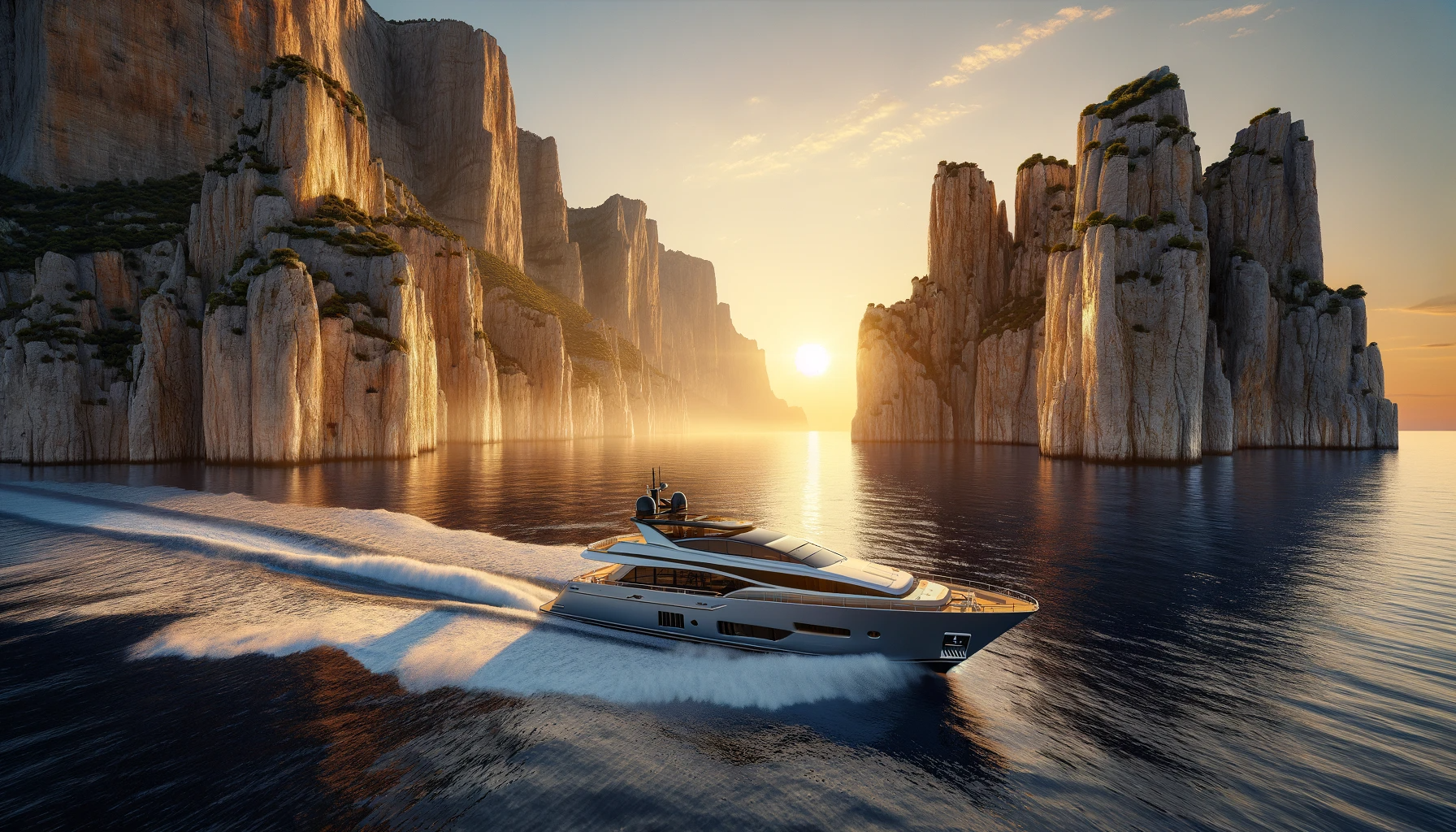
Yacht Buying as the Ultimate Indulgence: How to Secure Your Floating Paradise
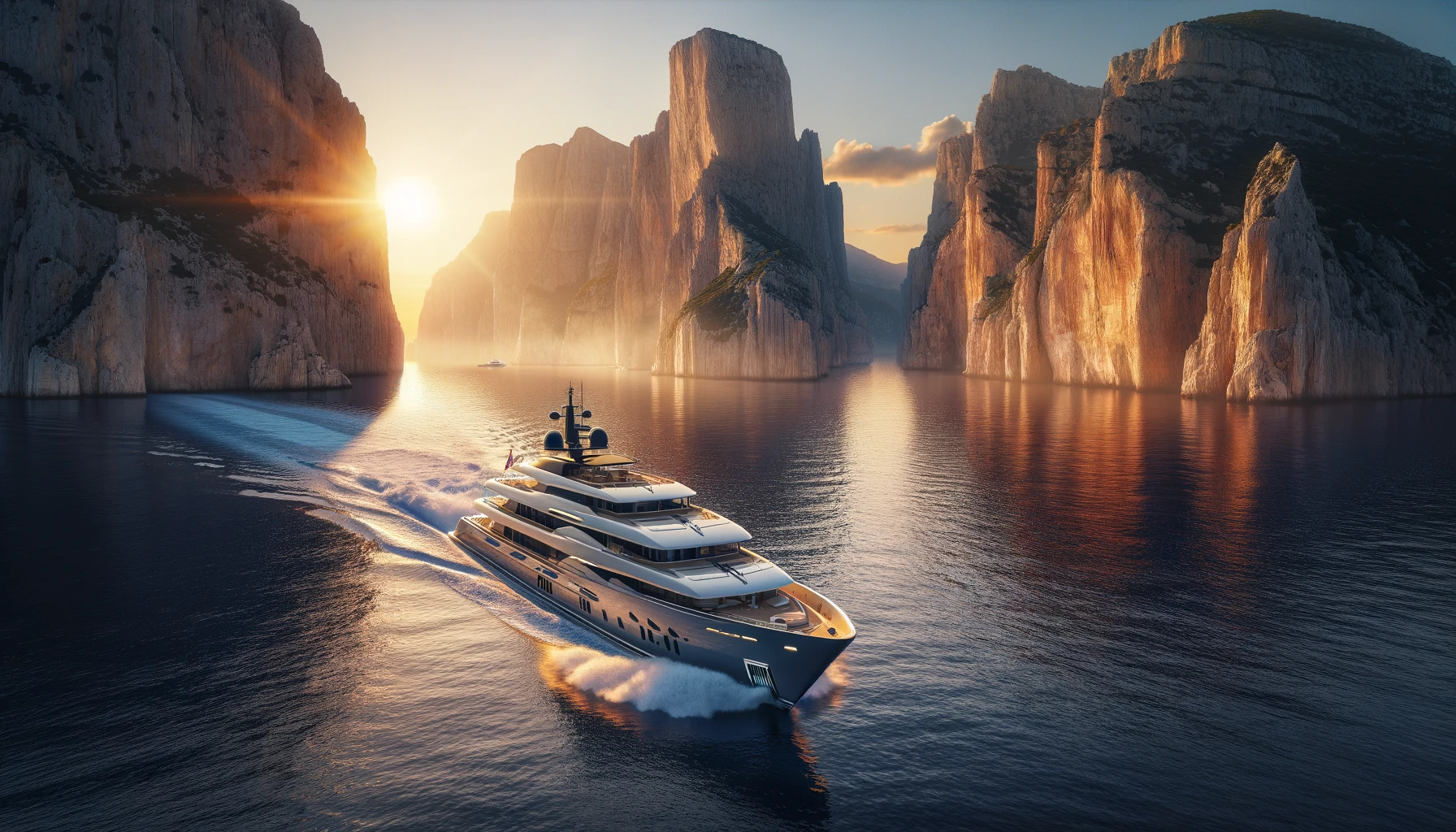
The Ultimate Expression of Seafaring Luxury: Buying a Yacht That Impresses

Luxury Yacht Buying: How to Ensure Your Vessel is a Beacon of Elegance


Boating Basics Online is reader-supported. When you buy via our links, we may earn a commission at no cost to you. Learn more
How Much Does It Cost to Dock a Boat? – The Average Cost
Written by J. Harvey / Fact checked by S. Numbers
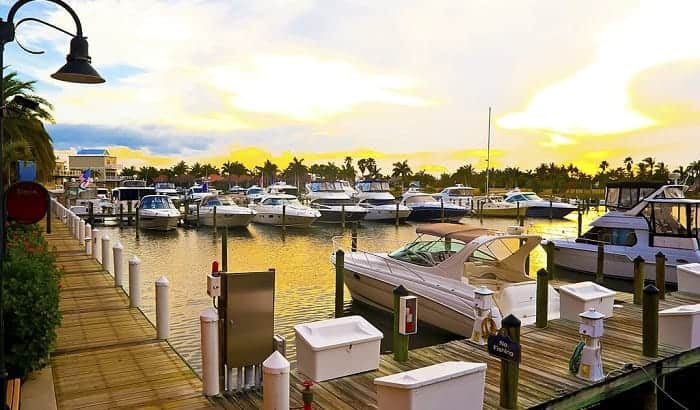
If you’re buying your first ever boat, one of the questions you may have in mind is, How much does it cost to dock a boat? It is one of the vital things for boat owners, as they need a place to keep their crafts safe and secured.
When docking at the right place, you can also comfortably and conveniently step aboard. But all these benefits come with a price tag. The yearly cost of docking for regular sailboats starts from $800 to $1 800.
A dock slip can cost from $12 to $240 per foot every year. The average is around $50. Docking fees for boats vary due to their length, location, and season. Learn more of the crucial details by reading this article.
Table of Contents
1. Regular docking slips
2. prime-location docking slips, 3. mooring vs anchoring, 1. availability, 2. security, 3. wet slip or dry slip, 4. minimum length, 5. the condition of the marina, 6. work policy, 1. electric, 3. pump-out fee, 5. membership fee, final words, how much does it cost to dock a boat – the cost of renting a boat slip.
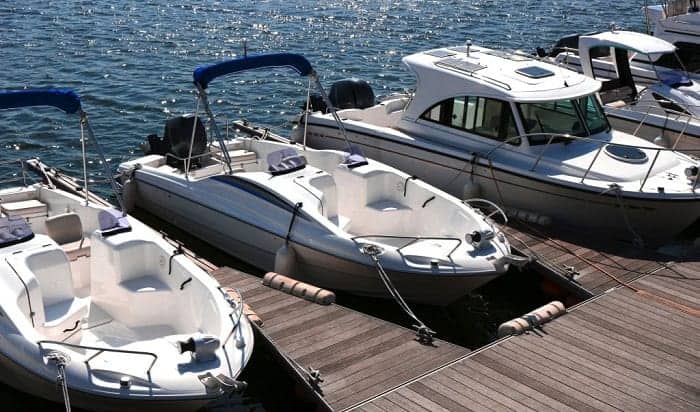
Just like everything else, the charge of boat slip depends on supply and demand. An increase in the price happens due to some situations.Usually, waterfront real estate is high-priced.
This estate does not only develop into marines and docks. They have another potential to be turned into a more profitable establishment. Some of these estates may not be ideal for docking in regards to local ordinances and ecological sensitivity.
There’s a hike in the cost of boat slips when the number of boaters increased. With these factors, the following details will be more specific. So, jot them down as notes and pay close attention.
These are simple berths found in marinas, situated in remote places like the coastline of small towns. Affordability is what makes these areas attractive.
However, they don’t offer easy access to popular sailing waters, unlike premium areas. The boat slip rental cost per hour can be $2 to $3. This is preferred by those who only drop by and do not stay for a long time.
Overnight stay can be from $4 to $6. You may also avail of this service monthly for $20 to $25 per foot, and annually for $23 or $24 per foot.
The charges vary depending on amenities, reservation time, and location. Electricity, dock box, freshwater, and tenant lounges are some of the things you can find in a boat slip.
The charge associated with regular docking slip multiplies when it comes to prime-location docking slip. It ranges from $120 to $240 per foot for yearly cost. Some areas even have a rate of $192 to $384.
The nightly rate for transient moorings starts at $20 and goes up to $45. The average boat slip cost is around $80 to $250 annually for any length of the boat. Vessels are usually from 24 feet to 72 feet. Here’s a chart that does the math for you:
Apart from docking costs, expected extra charges in prime-location dock slips. Due to popularity, a marina’s price multiplies because of these charges. When you put yourself on a waiting list, you have to pay a $150 deposit to be in the queue.
You will need another $25 or $50 for a car parking card and security key. You should know that catamarans take up a lot of space. Thus, they charge an extra 20%.
As you can see, it all depends on the spot that you’ve chosen to rent. You may also buy a small boat to avoid paying a high cost for docking. Some small vessels will be fine with simple anchorage, which can be affordable even in a popular location.
There’s a time of the year that you can save some money when mooring. It’s the low season, and you can enjoy as much as a 70% discount. However, not all locations have this offer every year.
What Are The Types Of Berth?
In this part, we will talk about the differences between mooring and docking as well as the types of the berth.
It refers to the permanent spot of the vessel in the water. The anchor that you use to pin your boat in a certain location is linked to a single section on the seafloor. It means that the anchor stays behind when you leave.
There’s no direct connection to the land. So, this setup requires a small boat like a dinghy to get on your sailboat. On the other hand, an anchorage is a place where you anchor a vessel using your anchor, and you can’t access the land.
To relieve you from the hassle of walking back and forth when retrieving and deploying your anchor, you can get the MinnKota Deckhand Remote Switch. It can be installed with ease and use with no trouble because of its plug-and-play design.
When you tie your boat on an assigned spot at the shore, it’s called docking . Anchors are not required and what you need are fenders and lines. This is done on a marina with slips or berths. Simply, you can call it a parking space for your boats.
There are good fenders that you can find like Taylor Made Super Gard Fender, SWELL Big Bumper Ball, Taylor Made Freeboard Fender, and X-Haibei Boat Fenders.
Transient mooring means daily rent, and if you sum it up, it’s more expensive than permanent mooring, which is the reservation of slips for the entire season.
Mooring and anchoring differ in the anchorage’s location. The former is always offshore while the latter is beside the shore, which makes land accessible.
What sets each of them apart is the means of anchoring. Mooring uses the anchor provided in the location. In the case of anchoring, infrastructure is not present. You’ll have to use your anchor.
Considerations When Choosing A Slip For Docking A Boat
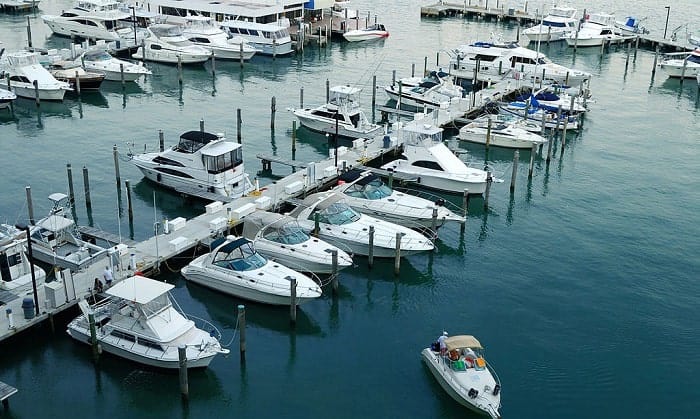
Choosing a marina or slip for docking is not as easy as you may think. Most marinas are known for their versatility in providing service, but dockage fees vary dramatically according to your choice.
Here are some considerations before deciding which slip you’ll take.
This is the fundamental thing you have to look at when hiring a service. You may need to arrange to be on the waiting list for popular marinas for peak season. Foresee shortage of slips as it can always happen.
The boats should be secured while at the slip. Marinas know this concern, and they’ve already prepared for it. Thus, controlled access to the docks and security guards should be present.
Wet slip is the main topic in this article. It’s how every boater can take their vessels in and out of the slip. Compared to dry slip, it costs higher. If you don’t use your boat regularly, dry slip is fine.
Efficiently renting out their spaces is the goal of marinas. A boat that is too small to occupy a slip; may not be desirable for marina owners. They would think it’s just a waste of money.
It’s the reason why the minimum length for boats is imposed. You’ll end up paying the entire slip even though your boat doesn’t use up the whole space. For instance, you’re obliged to pay the charge for a 20-foot boat slip despite having a smaller craft.
Be resourceful and ask around about the prevalent condition of the marina that you’re eyeing to dock your boat. Strong currents, large tidal waves, and exposure to the dock are some of the things you want to know.
Some marinas don’t allow outsiders to conduct professional service. They may have a list of recognized professionals who can make repairs and maintenance on your boat while being docked in their properties.
Other Charges
It can either be metered or with a flat fee. You may pay $10 to $50 per day. Variations take place due to your consumption or the gadgets and appliances that you use.
Some states put a tax on less than seven months’ stay at the marina.
Daily and weekly stays on the dock both need pump-outs. In some cases, the monthly stay would include this service in its price. But it can be an extra fee in some cases. A $5 charge may be added if public funding is involved in building the pump-up station.
You sometimes need to pay for someone who catches the line for you to plug your boat in. It’s termed as dockhand meet, and a tip of $5 or $10 is usually given in exchange.
Yacht club or resort membership fee is an additional charge if you’re not a member of the said organization.
Numerous factors should be weighed in for the right answer to ‘How much does it cost to dock a boat. It may depend on the marina where you’d like to dock your boat. The boat’s length is not the only basis as the slip size matters too.
Aside from paying the rent of the slip, you sometimes avail other services. These incur fees on top of the charge of renting a dock slip.

“I am James Harvey – founder of Boating Basics Online. It is established with the drive to help out first-time boaters, which are those desiring to explore their way through the water. So if you are new to boating, start from here with me. “
- Mastering the Art of Boat Mooring: A Comprehensive Guide
Navigating the open waters demands more than just the thrill of the journey; it requires the mastery of a fundamental skill—boat mooring . Whether you find yourself at the helm of a sleek yacht, a versatile pontoon boat, or any other watercraft, the art of securing your vessel isn't just about tying knots; it's about ensuring safety and cultivating peace of mind amidst the undulating waves. This comprehensive guide invites you on a journey to explore the intricate facets of boat mooring, encompassing the foundational basics to advanced techniques that elevate your maritime competence. Join us as we unveil the secrets to a secure and confident mooring experience, regardless of your seafaring expertise.
Understanding the Basics
A process that goes beyond a simple act of tying knots , mooring is the art of securing a boat firmly to a fixed structure, a vital maneuver preventing the vessel from untethered drifts and unwarranted movements. Whether it's a mooring buoy bobbing in open waters, a stable pontoon awaiting a boat's embrace, or the reassuring solidity of a dock, each scenario demands a nuanced approach. Before setting sail into the realm of advanced techniques, it is paramount to grasp the foundational basics of mooring. In this section, we embark on a journey to unravel the essence of boat mooring, where every knot and every connection is a declaration of maritime control and expertise.
Types of Mooring Points
Embarking on a journey across the seas requires more than just a navigational compass—it demands a nuanced understanding of the diverse mooring points that await seafarers. Here, we explore three quintessential mooring points that stand as sentinels against the capricious tides:
Mooring Buoys
In the vast expanse of open waters, mooring buoys emerge as steadfast allies. These floating devices, firmly anchored to the sea floor, beckon boats to secure their mooring lines, offering stability in the midst of the fluid and unpredictable nature of the sea.
Mooring Pontoons
Harboring both convenience and reliability, mooring pontoons present a floating sanctuary for boats. These platforms, seamlessly connected to the shore or anchored to the seabed, serve as stable foundations for mooring endeavors. As vessels approach, pontoons extend a welcoming embrace, facilitating secure connections and ensuring a smooth docking experience.
Dock Cleats
Along bustling docks and harbors, the unsung heroes of mooring are the sturdy dock cleats. These fittings, strategically placed on docks, stand ready to shoulder the responsibility of securing boats. Designed with durability in mind, dock cleats become steadfast partners in the delicate dance between boat and shore, offering a reliable point of connection in the bustling domain of marine activity.
In unraveling the tapestry of mooring points, we discover that each holds a unique role in the maritime narrative, beckoning sailors to navigate their vessels with precision and confidence.
Essential Equipment
Setting sail into the realm of boat mooring necessitates more than just maritime know-how; it demands a keen understanding of the essential equipment that transforms the act into a seamless and secure endeavor. Here, we introduce the trio of indispensable tools that form the backbone of every successful mooring operation:
Mooring Lines
Consider mooring lines as the lifelines connecting your vessel to stability. These robust ropes play a pivotal role in the mooring process, serving as the literal ties that bind your boat to the chosen mooring point—be it a buoy, pontoon, or dock. Crafted from materials designed to withstand the rigors of the sea, mooring lines are the first and last defense against the whims of the waves.
In the intricate ballet of boat mooring, cleats take center stage as the performers facilitating the choreography. These fittings, strategically placed on both boat and dock, serve as anchor points for mooring lines. By providing a secure and reliable grip, cleats transform the potential chaos of unbridled movement into a synchronized dance between vessel and mooring point.
Enter the unsung heroes of boat mooring—the protective guardians known as fenders. As cushions strategically positioned along the sides of the boat, fenders act as a defensive barrier against the potential impact with the mooring structure. By absorbing shock and preventing unsightly dings and scratches, fenders contribute to the longevity and aesthetics of both boat and mooring point.
In the symphony of boat mooring, these essential equipment components harmonize to create a seamless and secure maritime experience. As you embark on your mooring journey, ensure that your arsenal includes these tools, each playing a distinct role in the safety and success of your seafaring endeavors.
Techniques for Boat Mooring
As the sea beckons and vessels traverse the waterways, the mastery of boat mooring techniques becomes a captain's artistry. Navigating the nuances of securing your vessel is a skill set that goes beyond the horizon. Let's delve into the techniques that elevate mooring from a task to a finely tuned maritime performance:
Approaching the Mooring Point
The prelude to a successful mooring begins with a measured approach. Slow and controlled navigation is the key symphony conductor, allowing the captain to assess the mooring point and make adjustments with precision. As the boat gracefully glides towards its destination, this deliberate approach sets the stage for a seamless mooring experience.
Preparing Mooring Lines
In the overture of boat mooring, the importance of preparation cannot be overstated. Have your mooring lines ready and properly coiled, akin to a musician tuning their instrument before a performance. This ensures efficient deployment and eliminates the risk of tangled lines, enabling a swift and secure connection to the chosen mooring point.
Choosing the Right Knots
The artistry of boat mooring extends to the choice of knots —a sailor's repertoire of secure ties. Learn and master knots such as the cleat hitch and bowline, each serving a specific purpose in the delicate dance between boat and mooring point. The right knot is not just a means of connection; it's a testament to seamanship and expertise.
Accounting for Wind and Current
Nature's interlude in the mooring performance comes in the form of wind and current. A skilled captain understands the environmental factors at play and adjusts their approach accordingly. Accounting for the invisible forces that shape the sea ensures that the mooring process unfolds with grace and control, even in the face of challenging conditions.
In the grand composition of boat mooring, these techniques harmonize to orchestrate a safe, efficient, and controlled connection between vessel and mooring point. As you navigate the waters, let these techniques be your compass, guiding you through the intricate steps of securing your maritime companion.
Mooring Safety Considerations
As the captain orchestrates the mooring ballet, safety takes center stage in this maritime performance. The sea, while enchanting, can be unpredictable, demanding a vigilant conductor. Here are the key safety considerations to ensure a harmonious and secure mooring experience:
Weather Conditions
Nature's temperament plays a pivotal role in the success of any mooring endeavor. Stay attuned to the weather forecast , for winds and storms can transform the serene seascape into a challenging stage. Adjust mooring techniques in anticipation of adverse weather conditions, ensuring that your vessel remains steadfast against the elements.
Checking Equipment
The reliability of your mooring operation hinges on the integrity of your equipment. Regular inspections are the overture to safety. Take the time to meticulously examine and maintain mooring lines, cleats, and other essential gear. A well-maintained ensemble ensures that every element performs its role seamlessly, reducing the risk of unexpected mishaps.
Boat Size and Type
In the maritime symphony, not all vessels dance to the same rhythm. Recognize that different boats have distinct mooring requirements. Adapt your techniques to accommodate the size and type of your vessel. From the nimble sailboat to the majestic yacht, tailor your approach to ensure that your mooring practices are finely tuned to the nuances of your maritime companion.
In the intricate choreography of mooring safety, these considerations form the melody that guides the dance between vessel and mooring point. Prioritize safety, be it in the face of changing weather or the routine check of equipment, and let these considerations be your compass on the journey to secure and confident boat mooring.
Read our top notch articles on topics such as sailing, sailing tips and destinations in our Magazine.
Mooring yachts
Navigating the seas aboard a yacht adds a layer of sophistication to the art of mooring. As larger vessels command the waters, it's crucial to consider special considerations and employ specialized equipment. Delve into the nuances of mooring yachts with these focused insights:
Special Considerations
The grandeur of yachts demands an extra measure of attention to detail during the mooring ballet. Larger vessels, with their increased size and weight, may respond differently to environmental forces. Navigate with heightened awareness, considering factors such as wind, current, and the spatial requirements unique to yachts. A captain's discerning eye and a thorough understanding of the vessel's dynamics are paramount for a graceful mooring performance.
Yacht Lines and Cleats
Yachts, being the crown jewels of the maritime world, require a bespoke ensemble of mooring equipment. Familiarize yourself with yacht lines—robust, purpose-built ropes designed to bear the weight and dimensions of these majestic vessels. Explore the intricacies of yacht cleats, specialized fittings strategically placed to handle the forces exerted by large yachts during mooring. Mastery of yacht-specific lines and cleats is the key to a secure and confident mooring experience for vessels of grand stature.
In the realm of yacht mooring, precision and understanding are the compass points guiding the captain. Embrace the challenge of mooring larger vessels with the grace and finesse befitting their stature, ensuring that every connection to the mooring point is a testament to seamanship and mastery of the seas.
Legal and Environmental Considerations
As stewards of the seas, boat owners and sailors bear the responsibility of preserving the marine environment and adhering to local regulations. In the final act of our mooring guide, let's explore the legal and environmental considerations that underscore the importance of responsible seafaring:
Local Regulations
Before casting off into the waves, familiarize yourself with the maritime laws and mooring regulations governing your area. Different regions may have specific guidelines regarding mooring distances, permitted locations, and time restrictions. Adhering to these regulations not only ensures compliance but also fosters a harmonious coexistence with other seafarers and the coastal community.
Environmental Impact
The footprint left by boat mooring extends beyond the vessel itself. Practice responsible mooring to minimize environmental impact and protect delicate marine ecosystems. Avoid dropping anchor in sensitive areas such as coral reefs or seagrass beds. Opt for designated mooring zones when available, and be mindful of the potential repercussions of careless mooring practices. By embracing eco-friendly mooring, you contribute to the preservation of the diverse and fragile underwater world.
In the vast tapestry of maritime adventures, mastering the art of boat mooring emerges as a beacon of skill and responsibility. This guide, spanning the spectrum from fundamental basics to specialized techniques, equips seafarers with the knowledge to navigate the waters with confidence.
Understanding the nuances of boat mooring, employing the right equipment, and applying proper techniques become not just a skill set but a commitment to safety and environmental stewardship. Whether you're setting sail as a novice or as an experienced captain, may this guide serve as your compass, empowering you to embark on every journey with the assurance that your vessel is securely moored, and your impact on the seas is one of respect and care. Safe travels, and may the seas welcome you with open waves.
So what are you waiting for? Take a look at our range of charter boats and head to some of our favourite
sailing destinations .

Cost To Dock A Sailboat

Last Updated by
Daniel Wade
May 17, 2023
Key Takeaways
- Boat dock prices vary based on location and the amenities they offer
- A boat’s length is typically the deciding factor in price for a boat slip
- The monthly fee to dock a boat is roughly $500 a month on average in the US
- Prime locations can range up to $1,000 a month or more in average prices for a dock slip
- Small towns usually have some of the best dockage fees
The cost to dock a sailboat varies based on many factors. Have you ever wondered what the average boat slip cost is for boat owners?
The average boat slip cost ranges anywhere between $15 and $30 per foot of your boat. For boats that are under 30 feet you can expect to pay around $50 a day or roughly $500 a month. These costs can also range much higher if your boat is in a prime location or you need certain amenities.
In my experience, marinas typically charge by the foot of your boat in order to lease out temporary parking space for your boat. Smaller towns will typically have cheaper docking fees but these also vary in your length of stay.
Table of contents
Costs of Docking a Sailboat
Common docking costs might range up to $2 a foot per day. The longer you stay the more you will end up paying of course but some places might offer a discount.
In order to figure out how much you will be paying per day or month you simply need to multiply the rate you see by your current boat length. Keep in mind that some places will charge you a flat rate to fit you in a certain space. For example if your pontoon boat might be 24 feet long but they might put you in a 30 foot spot if the dock is positioned in a certain way or if you need the adequate space to allow other boats to navigate.
Location Matters
Boat docks in Florida will be different in price versus those in Maryland . Prime locations in these states will offer the highest rates. These can range in price between $100 and $300 per foot a year.
Initial Deposit
Every marina you come in contact with will likely have some sort of list to get on and put a deposit down. This is similar to putting a deposit down on an apartment but you will not be getting it back.
These are an upfront payment to the dock to ensure that you are a reliable renter. These are required for long stays and sometimes that payments can be as high as the first month’s rent.
Access Keys
You might need keys in order to get into the marina or leave as you wish. If that is the case and you want an extra key you will have to pay up to $50.
Common Utilities
Utilities are exactly what you have in mind and include:
- Fresh water
- Electricity
- Removal of waste
These can be a fixed rate up to $20 a month. In some cases you might be charged by the meter on electricity if applicable.
Fees for Living Aboard
Liveaboard fees could also become much higher if you intend to live on your boat full time or call it a second home. These can vary up to half of the cost of your slip rate.
When choosing a permanent dock or just a place to dock a boat for the night you need to have the right materials. These include but are not limited to:
- Fenders to protect the boat from the dock
- Heaters and ice eaters to help during cold months
- Waterproof covers for your seats
- Paint and other epoxy to help keep your boat’s coat sealed
How to Save Money on Docking Fees
There are a handful of ways to save money on a boat slip rental cost. These costs will vary on many locations and marinas.
Planning Ahead
Navigating your trip ahead of time can save you a lot of money in the long run. Planning your trips and knowing the best places to stop to take on fuel on groceries can help narrow down your costs in docking.
A much cheaper way to dock your boat is to use your own anchor and ground tackle. Anchoring significantly lowers the price but you miss out on a lot of the amenities or utilities and even security.
Keep in mind that you should not anchor your boat in unsafe locations or areas that are not friendly to that. Most locations will clearly post signage that states you cannot anchor.
Different Dock Types
If you are able to build your own dock or can find a location that has one of these then you can save money in the long run. Since you are attempting to dock your boat in one of these smaller locations you are not using other amenities or increased price ranges.
- Floating dock - These change with the rise and fall of the tide and cannot sink
- Crib dock - very sturdy and permanent dock
- Piling dock - vertical support that are used for anchoring or aid in piers
Best Locations for a Boat Dock
Reading reviews before arriving at a dock is one of the best ways to get a good feel for the quality of service you are about to receive. The locations that are best for you will differ from other boat owners based on desired sailing areas and your budget.
Launch Service
Marinas often offer a launch service so that you can safely get to and from your boat. Some are small enough that you can easily walk to your boat from the dock and do not have to worry about it.
Refunding Deposits
A lot of marina owners do not give back deposits. In some rare cases you could get one back but keep in mind that you are paying up front to show the owner you are serious in staying there. Some marinas might not allow pets or have other rules so be sure to read those before paying your deposit.

Choosing the Right Berth
Locating the right berth should allow your boat a variety of comfort. These comforts include:
- Protection from the elements and waves
- Easy access in and out of the marina with little traffic
- Security or in an area where it is safe
If you plan on keeping your boat for a long period of time at a dock or at an outdoor boat storage you should consider:
- Covering your boat with tarps or covers helps keep out the weather and birds
- Make sure to properly tie your boat so that it does not damage other boats or become loose
- Keep navigation lights on at night so other boats can safely see you
Types of Berths to Consider
There are a few berthing options to consider based on your needs to park your boat. Keep in mind that prices vary heavily and could have a flat fee depending on who owns the area of berthing.
A permanent mooring location allows you to park your boat on the water. This permanent spot enables you to hook onto it and then you leave it behind once you are done. You will likely need a small dinghy in order to get back and forth to the land.
Transient mooring means you are renting it on a daily basis. Transient moorings typically cost more per day compared to being averaged out for a monthly rate. Mooring is more offshore and docking gives you access to land so each will have various costs.
These spots allow you to anchor your boat using your own anchors. This also means you do not have easy access to land so a dinghy might be needed too. Anchoring is great if you have the necessary tools to get the job done.
Marinas will allow you to dock at their location for various fees. Some are floating docks while others are stationary. You simply tie off your boat and use fenders to protect it from the dock.
Related Articles
I've personally had thousands of questions about sailing and sailboats over the years. As I learn and experience sailing, and the community, I share the answers that work and make sense to me, here on Life of Sailing.
by this author
Financial and Budgeting
Most Recent

Best Bluewater Sailboats Under $50K
December 28, 2023

Cost To Sail Around The World
May 16, 2023
Important Legal Info
Lifeofsailing.com is a participant in the Amazon Services LLC Associates Program, an affiliate advertising program designed to provide a means for sites to earn advertising fees by advertising and linking to Amazon. This site also participates in other affiliate programs and is compensated for referring traffic and business to these companies.
Similar Posts

Are Sailboats Cheaper Than Powerboats?
April 28, 2023

How Long Can You Finance A Pontoon Boat?
Jacob Collier
October 30, 2022

Cost To Rent a Sailboat
August 30, 2022
Popular Posts

Best Liveaboard Catamaran Sailboats

Can a Novice Sail Around the World?
Elizabeth O'Malley
June 15, 2022

4 Best Electric Outboard Motors

How Long Did It Take The Vikings To Sail To England?

10 Best Sailboat Brands (And Why)
December 20, 2023

7 Best Places To Liveaboard A Sailboat
Get the best sailing content.
Top Rated Posts
Lifeofsailing.com is a participant in the Amazon Services LLC Associates Program, an affiliate advertising program designed to provide a means for sites to earn advertising fees by advertising and linking to Amazon. This site also participates in other affiliate programs and is compensated for referring traffic and business to these companies. (866) 342-SAIL
© 2024 Life of Sailing Email: [email protected] Address: 11816 Inwood Rd #3024 Dallas, TX 75244 Disclaimer Privacy Policy

How to Moor a Boat: A Clear and Confident Guide
Mooring a boat can be a daunting task, especially for new boat owners. However, it is an essential skill that every boat owner must master how to moor a boat and ensure the safety of their vessel.
Mooring involves securing a boat to a fixed structure such as a wharf, buoy, or jetty. It is essential to understand the basics of mooring and the different techniques and types of anchors to use.
Choosing the right mooring spot is crucial to ensure the safety of the boat. Factors such as water depth, wind, and current should be considered when selecting a mooring spot.
Preparing the boat for mooring is also an important step that should not be overlooked. This includes ensuring that all equipment is in good working condition and that all crew members are aware of their roles during the mooring process.
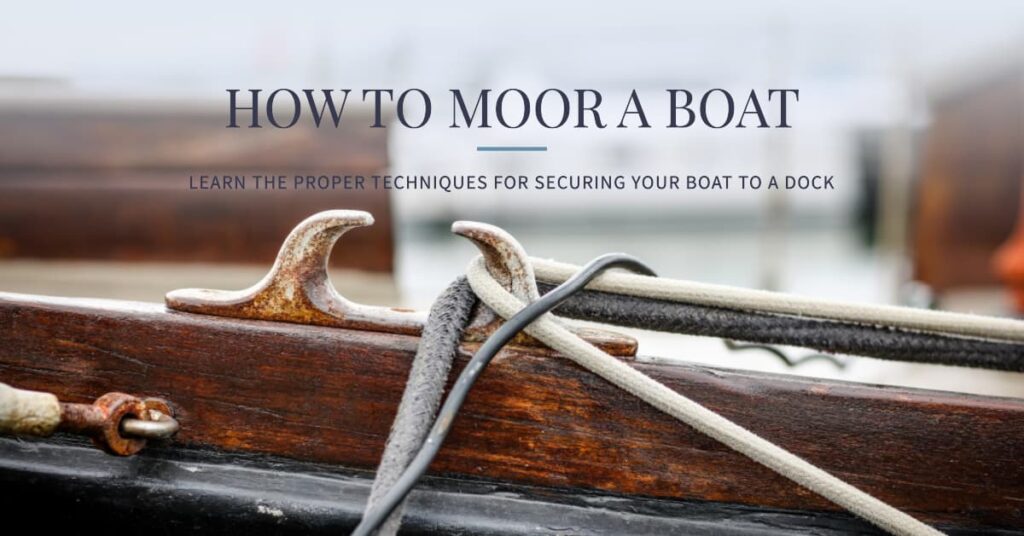
Key Takeaways
- Understanding the basics of mooring is essential for every boat owner.
- Choosing the right mooring spot and preparing the boat for mooring are crucial steps in the process.
- Knowledge of different mooring techniques and types of anchors is necessary for safe and secure boat mooring.
Understanding Mooring Basics
Mooring a boat is the process of securing it to a fixed structure like a dock or a buoy. It is essential to understand the basics of the mooring system to ensure that the boat is safely secured.
Mooring System Components
The mooring system consists of several components that work together to keep the boat in place. Here are the essential components of a mooring system:
Mooring Buoy
A mooring buoy is a floating device that is attached to an anchor on the seabed. It is used to secure the boat to the mooring system. The buoy is usually made of plastic or hard foam and is designed to float on the water’s surface.
Mooring Anchor
The mooring anchor is a heavy weight that is attached to the mooring buoy with a chain. It is designed to hold the buoy and the boat in place. The anchor is usually made of steel and is designed to withstand the forces of the wind and the waves.
Mooring Lines
Mooring lines are ropes that are used to secure the boat to the mooring system. They are attached to the mooring buoy and the boat. The mooring lines should be strong enough to hold the boat in place and should be long enough to allow the boat to move with the tide.
Chains are used to connect the mooring buoy to the mooring anchor. They are designed to withstand the forces of the wind and the waves and are usually made of steel.
Swivel Shackle
A swivel shackle is a device that is used to connect the mooring lines to the mooring buoy and the boat. It is designed to rotate and prevent the mooring lines from getting twisted.
Mooring Pennant
A mooring pennant is a rope that is used to connect the mooring buoy to the mooring lines. It is designed to absorb the shock of the waves and prevent the mooring lines from getting damaged.
Chafe-Resistant Coating
A chafe-resistant coating is a protective layer that is applied to the mooring lines to prevent them from getting damaged by rubbing against the mooring buoy or the boat.
Understanding the components of the mooring system is essential to ensure that the boat is safely secured. It is important to inspect the mooring system regularly to ensure that all the components are in good condition and are working properly.
Choosing the Right Mooring Spot
Mooring a boat is a crucial skill for any boater. It involves securing your boat to a fixed object, such as a buoy, dock, or pier, to prevent it from drifting away. However, choosing the right mooring spot can be challenging, especially for novice boaters. In this section, we’ll discuss the factors to consider when choosing a mooring spot.
Factors to Consider
When choosing a mooring spot, several factors should be considered to ensure the safety of your boat and everyone on board. These factors include:
The location of the mooring spot is critical. It should be in a sheltered area that offers protection from strong winds, waves, and currents. A protected harbor, bay, or lake is an ideal location for mooring. In addition, the depth of the water should be sufficient to prevent the boat from hitting the bottom during low tide.
Infrastructure
The infrastructure of the mooring spot is also essential. The availability of docks, piers, and jetties can make it easier to secure your boat. A well-maintained marina with ample facilities can offer a more comfortable and convenient mooring experience.
Accessibility
The accessibility of the mooring spot is another critical factor. It should be easy to access, especially during high traffic periods. A mooring spot that is too far from shore or requires a long walk to reach can be inconvenient and time-consuming.
Other Boats
The presence of other boats in the area should also be considered. A crowded mooring spot can make it difficult to maneuver your boat and secure it properly. It’s best to choose a mooring spot that offers ample space and is not too close to other boats.
Regulations
Lastly, it’s important to consider any regulations that may apply to the mooring spot. Some areas may have restrictions on the size and type of boats that can be moored. It’s essential to check with local authorities to ensure that you are complying with all regulations.
In conclusion, choosing the right mooring spot is critical to ensure the safety of your boat and everyone on board. By considering factors such as location, infrastructure, accessibility, other boats, and regulations, you can find the ideal mooring spot for your needs.
Preparing Your Boat for Mooring
Before mooring a boat, it is important to prepare the boat to ensure safe and secure docking. This section will cover the three essential sub-sections for preparing a boat for mooring: Checking the Weather, Securing the Gear, and Setting the Fenders.
Checking the Weather
One of the first things to do before mooring a boat is to check the weather conditions. The weather can affect the safety of the boat and the mooring process. Boaters should check the wind, waves, tides, and any approaching storms or inclement weather. The National Oceanic and Atmospheric Administration (NOAA) provides weather forecasts for boaters on its website.
Securing the Gear
Securing the gear on the boat is crucial before mooring. All loose equipment, such as chairs, fishing gear, and coolers, should be stowed away to prevent them from falling overboard or damaging the boat. The boat’s lines and bumpers should also be prepared and ready for use.
Boaters should check that the lines are strong enough to withstand the wind and waves and that the bumpers are properly inflated and positioned to protect the boat.
Setting the Fenders
Boat fenders or bumpers are used to protect the boat from damage while mooring. Boaters should set the fenders in the correct position before approaching the dock or buoy.
The fenders should be placed on the side of the boat that will be facing the dock or buoy. The number of fenders used will depend on the size of the boat and the mooring location. Boaters should also ensure that the fenders are properly secured and positioned to avoid any damage to the boat. Follow the link to read more about boat fenders or bumpers .
By following these three essential steps, boaters can prepare their boats for mooring and ensure safe and secure docking.
Mooring Techniques
Mooring a boat can be a challenging task, but with practice and the right technique, it can be done safely and efficiently. This section will cover the essential steps for mooring a boat, including approaching the mooring spot, securing the boat, and leaving the mooring spot.
Approaching the Mooring Spot
When approaching the mooring spot, it’s important to do so at a slow and steady speed to avoid damaging the boat or the mooring. The crew should be ready to secure the boat with lines as soon as it comes to a stop.
To approach the mooring spot, the boat should be put in neutral, and the engine should be idling. The boat should then be maneuvered into position using the bow and stern lines.
Securing the Boat
Once the boat is in position, it’s time to secure it to the mooring. The crew should use bow, stern, and spring lines to keep the boat in place.
The bow line should be secured to the mooring first, followed by the stern line. The spring lines should be secured last, and they should be used to prevent the boat from moving forward or backward.
To secure the lines, the crew should use a cleat hitch. This knot is easy to tie and untie and provides a secure hold on the line.
Leaving the Mooring Spot
When leaving the mooring spot, it’s important to do so slowly and carefully. The crew should untie the lines in the reverse order that they were secured, starting with the spring lines, followed by the stern line, and then the bow line.
The boat should be put in reverse, and the engine should be idling. The boat should then be maneuvered away from the mooring spot using the bow and stern lines.
In conclusion, mooring a boat requires practice and the right technique. By approaching the mooring spot at a slow and steady speed, securing the boat with the right lines and knots, and leaving the mooring spot carefully, boaters can ensure a safe and efficient mooring experience.
Types of Anchors and Their Uses
When it comes to anchoring a boat, choosing the right anchor for the specific conditions is essential. There are several types of anchors available, each with its own set of advantages and disadvantages. In this section, we will discuss the most common types of anchors and their uses.
Choosing the Right Anchor
When choosing an anchor, it is important to consider the type of boat, the size and weight of the boat, and the conditions in which it will be anchored. The most common types of anchors include fluke anchors, plow-style anchors, mushroom anchors, navy anchors, and helical anchors.
Fluke Anchor
The most common type of anchor is the fluke anchor , also known as the Danforth anchor or lightweight anchor. Fluke anchors have wide, flat flukes that allow them to hold fast in a variety of bottom types, including sand and mud. They are lightweight and easy to handle, making them popular among boaters.
Plow-Style Anchors
Plow-style anchors are designed to dig into the bottom and hold fast in a variety of conditions, including grass, rock, and coral. They are ideal for larger boats and can provide excellent holding power in strong currents.
Mushroom Anchors
Mushroom anchors are designed to sink into the bottom and provide a large surface area to hold the boat. They are ideal for soft bottoms, such as mud or sand, and are often used for mooring.
Navy Anchors
Navy anchors, also known as stockless anchors, are designed for larger boats and ships. They are heavy and provide excellent holding power in strong currents and rough conditions.
Helical Anchors
Helical anchors are screw-like anchors that are driven into the bottom with a motor. They are ideal for soft bottoms, such as mud or sand, and can provide excellent holding power in a variety of conditions.
In addition to choosing the right type of anchor, it is also important to consider the weight and material of the anchor. A heavier anchor will provide better holding power, while a lighter anchor will be easier to handle. Galvanized chain and double-braid polyester rope are popular choices for anchor rode, as they are strong and durable.
Overall, choosing the right anchor for the specific conditions is essential for safe and secure mooring. Boaters should always consult the manufacturer’s recommendations and be prepared to adjust their anchoring strategy as conditions change.
Safety Measures and Precautions
When it comes to mooring a boat, safety should always be the top priority. There are various risks and potential damages that can occur during the process, so taking the necessary precautions is crucial. Below are some safety measures that should be taken into account:
Dealing with Rocky Bottoms
One of the risks that can occur during mooring is dealing with rocky bottoms. When the bottom is rocky, it can damage the gelcoat of the boat and cause other potential risks. To avoid this, boaters should use a mooring buoy or anchor in a sandy area. If there is no other option but to moor in a rocky area, boaters should use a heavy-duty anchor and ensure that it is set securely.
Night Mooring
Mooring at night can be challenging, especially if the boater is not familiar with the area. To avoid potential risks, boaters should use navigation lights and be aware of any currents or obstacles that may be present. It is also recommended to moor at a safe distance from other boats to avoid any potential damage.
Overall, taking the necessary safety measures and precautions when mooring a boat is essential to avoid any potential risks or damages. Boaters should always be knowledgeable and confident in their abilities to ensure a safe and successful mooring experience.
Cost Considerations
When it comes to mooring a boat, there are several cost considerations that boat owners should keep in mind. The cost of mooring a boat can vary significantly depending on a number of factors, including the size of the boat, the location of the mooring, and the type of mooring equipment that is used.
One of the primary cost considerations for boat owners is the cost of the mooring equipment itself. Depending on the size of the boat, the type of mooring equipment that is required can vary significantly.
For smaller boats, a simple anchor or mooring buoy may be sufficient, while larger boats may require more complex mooring systems that include multiple anchors and chains. The cost of this equipment can range from a few hundred dollars to several thousand dollars, depending on the size and complexity of the system.
In addition to the cost of the mooring equipment, boat owners should also consider the ongoing cost of maintaining and replacing this equipment. Over time, mooring equipment can become damaged or worn, and it may need to be replaced in order to ensure the safety of the boat. Boat owners should factor in these ongoing maintenance costs when considering the overall cost of mooring their boat.
Another cost consideration for boat owners is the cost of the mooring location itself. Depending on the location, mooring fees can vary significantly.
For example, mooring in a popular marina in a major city can be significantly more expensive than mooring in a small, quiet harbor in a rural area. Boat owners should research the cost of mooring in different locations and factor this into their overall budget.
Overall, the cost of mooring a boat can be significant, particularly for larger boats or for those mooring in popular locations. However, by carefully considering the cost of mooring equipment and location, boat owners can make informed decisions about how to best moor their boat while staying within their budget.
Frequently Asked Questions
What is the best way to moor a boat.
The best way to moor a boat depends on the specific conditions and the type of boat being moored. However, some general tips for safe and effective mooring include choosing a sheltered spot, using appropriate mooring lines and fenders, and ensuring the boat is secured to the mooring point in a way that allows for changes in tide and weather conditions.
What are the 3 methods of mooring?
The three main methods of mooring a boat are anchoring, tying to a dock or pier, and using a mooring buoy. Anchoring involves dropping an anchor to the seabed and securing the boat to it with a line. Tying to a dock or pier involves securing the boat to a fixed structure using mooring lines. Using a mooring buoy involves attaching the boat to a buoy that is anchored to the seabed.
How to make a boat mooring?
To make a boat mooring, one needs to choose a suitable location and anchor point, and then install a mooring buoy, anchor, or dock cleat. The mooring point should be strong enough to hold the weight of the boat and withstand changes in tide and weather conditions. It is also important to use appropriate mooring lines and fenders to protect the boat and ensure it is secured safely.
What is the difference between a marina and a mooring?
A marina is a facility that provides docking, storage, and other services to boat owners, while a mooring is a single point to which a boat can be secured. Marinas typically offer more amenities, such as fuel, electricity, and water hookups, while moorings are often simpler and less expensive. However, mooring may be more suitable for boats that are not used frequently or are only used seasonally.
How to moor a boat to a buoy?
To moor a boat to a buoy, one needs to approach the buoy slowly and carefully, taking into account wind and current conditions. Once the boat is in position, attach a mooring line to the buoy using a bowline knot or similar secure knot. The line should be long enough to allow for changes in tide and weather conditions but not so long that it drags on the seabed.
How to moor a boat to a dock?
To moor a boat to a dock, one needs to approach the dock slowly and carefully, taking into account wind and current conditions. Once the boat is in position, secure it to the dock using appropriate mooring lines and fenders. The lines should be tied securely to dock cleats or bollards and should be long enough to allow for changes in tide and weather conditions.
About the author
I worked as an officer in the deck department on various types of vessels, including oil and chemical tankers, LPG carriers, and even reefer and TSHD in the early years. Currently employed as Marine Surveyor carrying cargo, draft, bunker, and warranty survey.
Leave a Reply Cancel reply
Your email address will not be published. Required fields are marked *
Save my name, email, and website in this browser for the next time I comment.
Latest posts

What Are the Most Common Shipbuilding Woods?
While shipbuilders have switched to other practices, wood still has a place in the maritime industry. The numerous types available mean manufacturers have myriad options, so here’s a guide on shipbuilding woods.

Fiberglass vs. Steel: Which Is More Reliable?
Shipping professionals should get the most from their investment, so which is more reliable: steel vs. fiberglass? Here’s how to determine the better option.

What Does a Longshoreman Do?
Longshoremen play a critical role in the global supply chain, bringing billions worth of cargo into the country. So what does a longshoreman do exactly?
How Much Does It Cost to Dock a Boat? (Price Chart)
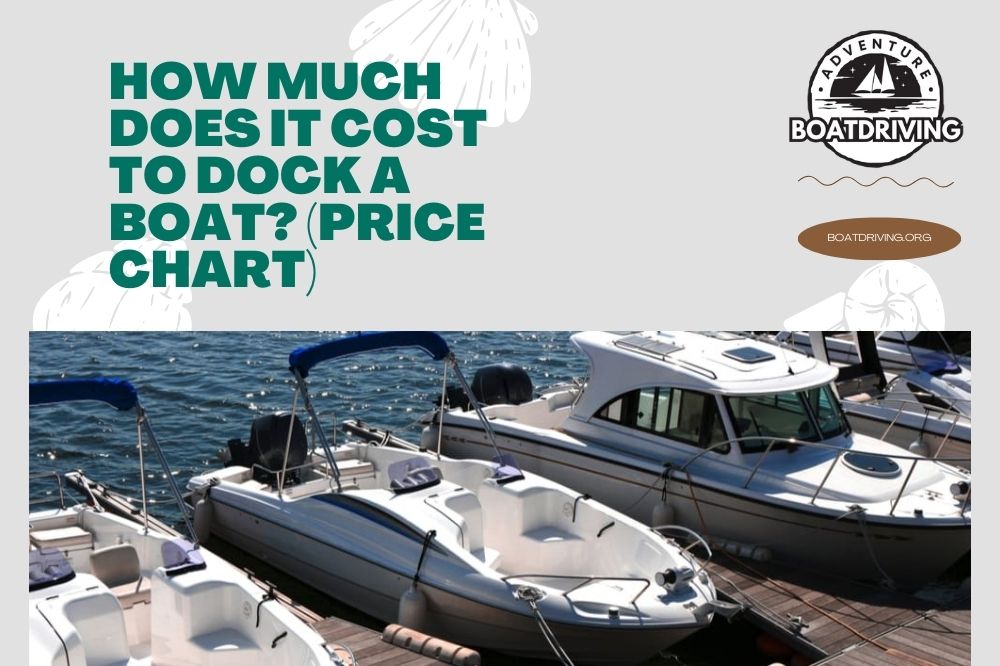
When you have a vessel, you probably wonder how much does it cost to dock a boat. Renting a slip (berth) in a US marina typically costs $12 to $240 per 1 foot (0.3 m) of the boat’s length a year. Roughly, most marinas will rent a spot for $50/ft a year on average.
In most cases, you will probably need to pay $800 to $1,800 per year for an average sailboat. Remember that this number can significantly vary depending on a boat’s length, location, and season. However, you can find alternative berth types that can save you money. Let’s see.
Table of Contents
Factors Affecting Docking Price
Berths types, slip cost in the us and canada, slips costs in europe, docking length, things to consider before docking.
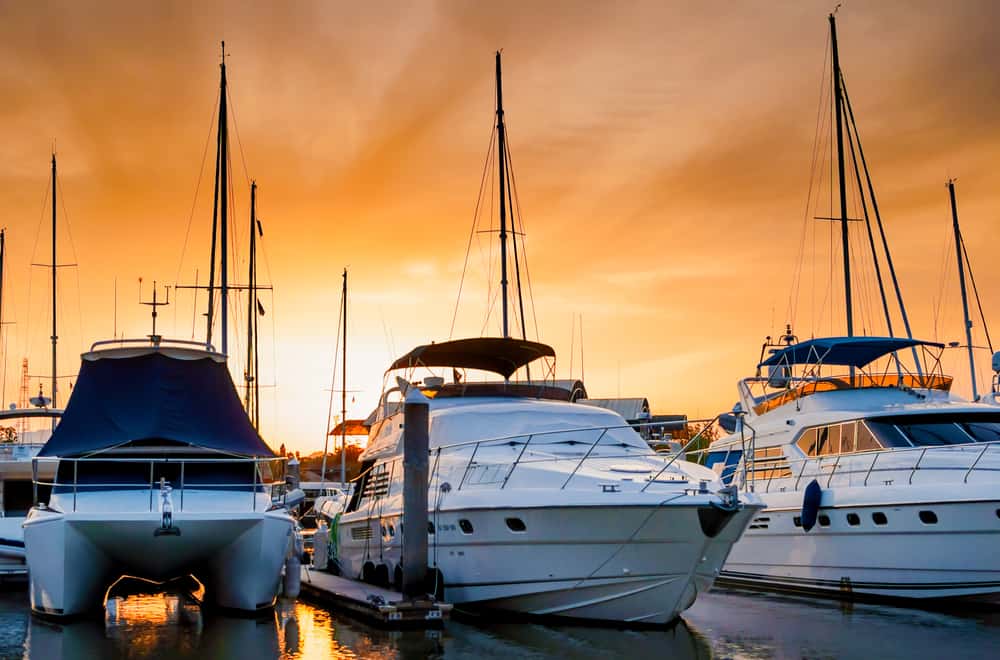
Believe it or not, you can secure your boat in a fixed spot in a few ways. This service price will differ depending on the berth type you choose.
Anchorage – It is a place where you can drop the boat anchor without access to the shore. In this case, you need to provide your own anchor .
Mooring – It is a permanent spot for your boat in the water. In this case, you need to use an anchor fixed to a buoy or seafloor to pin the vessel without direct connection to the land.
Docking – It is tying the boat with slips or berths to a particular spot in a marina. The primary advantage of this method is access to the land with a slip or berth to secure your boat.
In all cases, you need to pay the required fees for keeping the boat at the place . It is possible to take:
- Transient moorings when booking a docking place per day
- Permanent moorings when booking a docking for the entire season
As you can guess, annual berths are less expensive options, and you will typically pay three to four times less than for renting a berth daily. You can also have an opportunity to buy a berth in some marinas, and prices will vary depending on location.
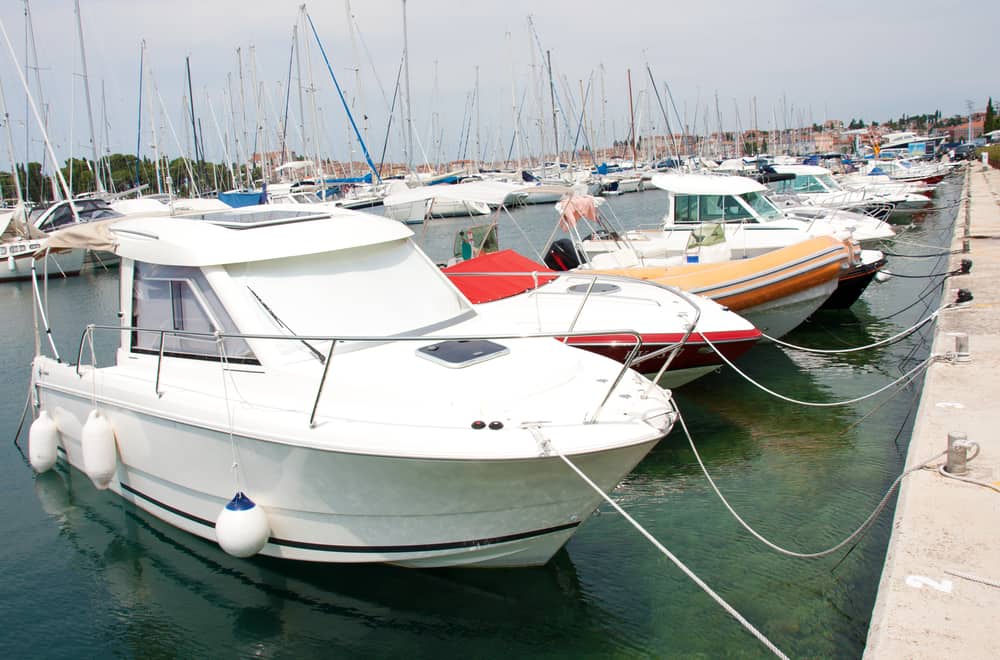
Location will always significantly affect docking price and depend on standards in the particular region. Typically, prices will be higher in city marinas than in small-town docks .
For instance, a budget-friendly Fort Lauderdale will charge $1.50/ft monthly, while you need to pay $23 for the same boat and period in Miami.
Even docks in the same city have different fees. For example, docking a boat in Yacht Haven Marina in Los Angeles is $10.50 to $12.95/ft a year. On the other hand, Marina del Rey in the same city will charge $192 and $240/ft per year.
The same is overseas. The highly desirable Mediterranean has high slip fees, while marinas in the Middle East, Asia, South America, and Africa will be more affordable. However, you can expect that Tokyo, Hong Kong, and Singapore as key cities are expensive.
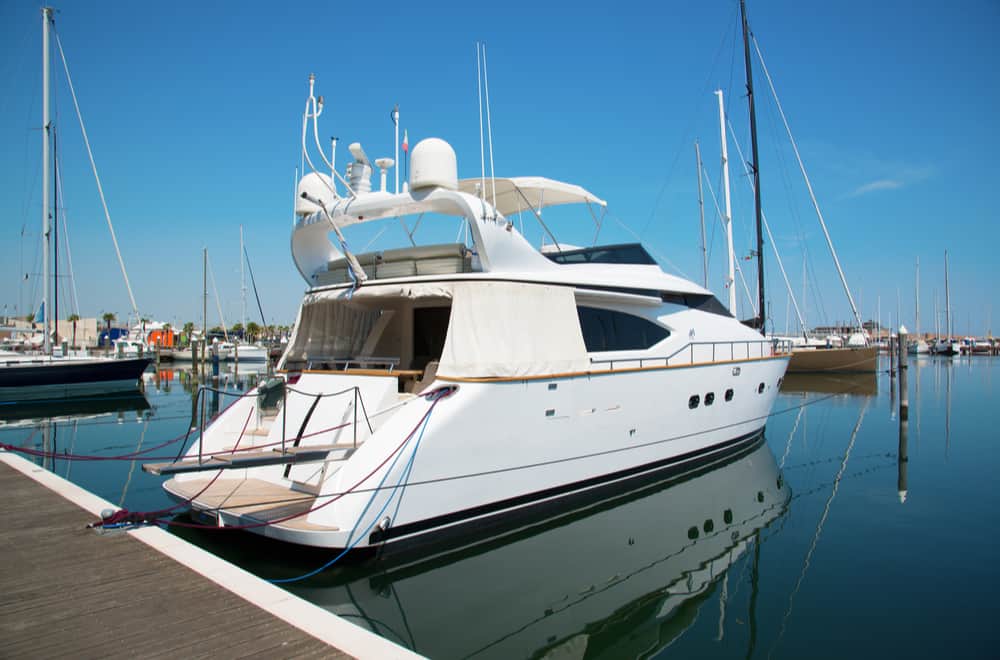
Most boat owners look for seasonal or annual slips. You can pick out:
Regular docking slip
It is a berth in a small marina located in local towns along the coastline. An average boat slips rental cost in such a place is typically $2 to $3 per hour.
If you want to stay overnight, you should pay $4 to $6 for this service. On the other hand, it is necessary to set aside $20 to $25/ft for a monthly bill or $23 or $24/ft when you need a spot for a year.
In this case, you will have a spot for your boat but without premium services available or direct access to the most famous sailing waters. However, it is an excellent solution when you don’t plan to stay long.
Prime location
These marinas are located in cities and famous bays in Florida, San Francisco, San Diego, and Los Angeles. They are more costly but typically offer premium services and quick access to popular sailing waters. Premium services include:
- Boat maintenance and necessary repairs
- Fuel station
- On-site restaurants, cafes, and shops
- Laundry service
- Wi-Fi and TV
- Docking assistance
- Wintering cleaning and storage
Winterizing a boat can cost you a few hundred dollars, but the most expensive marinas can charge even $2,000 for this service.
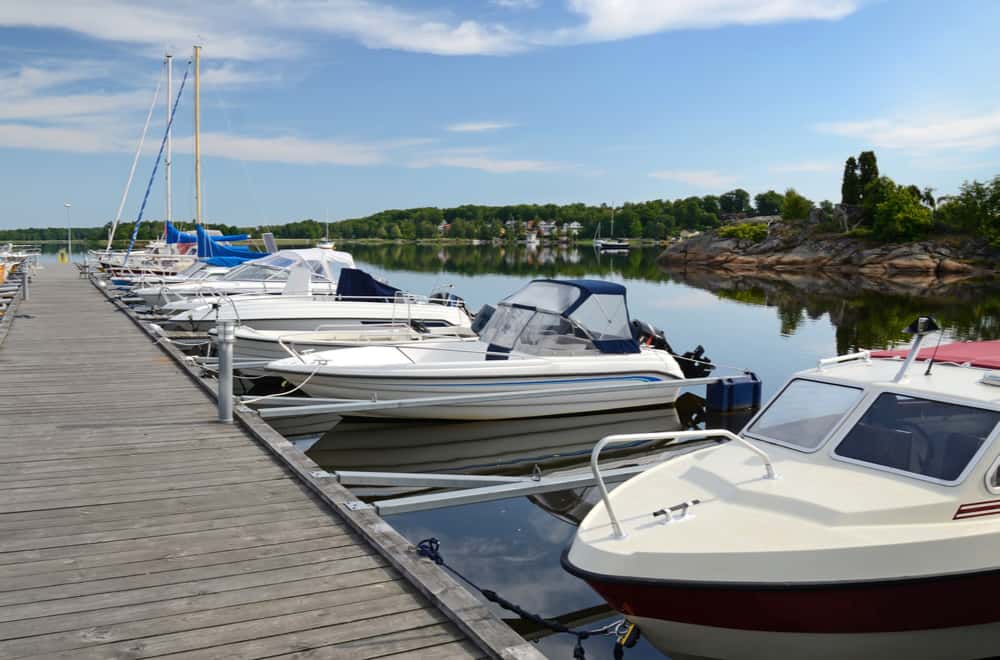
Since the Mediterranean is a popular destination, you should count on high slips costs. Depending on location, you will need to pay annual fees of:
- $50 to $450/ft (€135 – €1,350 per meter) per year in France
- $75 to $175/ft (€225 – €525 per meter) per year in Greece
- $100 to $440/ft (€285 – €1,350 per meter) per year in Italy
- $160 to $350/ft (€435 – €1,050 per meter) per year in Croatia
Greece has not many marinas since Greeks prefer free or cheap moorings and anchorages. On the other hand, you should count on a $4,500 annual fee in Italy and France on average if you have a 32 feet (9.75 m) long yacht.
Remember that prices will vary depending on the marina in the same country. For instance, the most costly port in France is the Old Port of Saint Tropez. It is double in price than the Port of Cannes.
The most expensive marinas worldwide are in Monaco, so you will need to pay $9,000 to $43,500 for a slip monthly. However, a rate can reach up to $100,000 per month during the Grand Prix.
Most marinas in Europe have high and low seasons because of harsh weather in winter. In this case, renting a mooring can cost you 70% less in the low season.
The peak season in this destination is from July to the beginning of September, making this period the most expensive in the year.
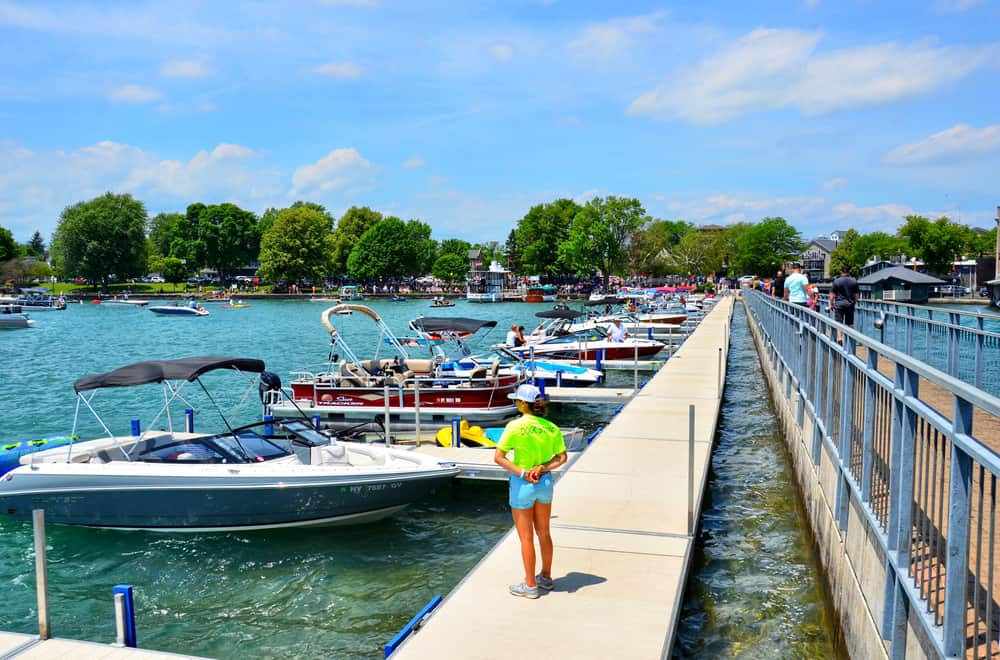
Be prepared that boat size is everything when it comes to docking prices, and most marinas will charge their fees by your boat length in feet/meters.
Be prepared that marinas measure your boat differently, so you should be careful when calculating. You can recognize four measurements by feet:
- LOA (length over all/over air)
- LOH (hull length)
- LOD (deck length)
- LWL (the loaded length at the waterline)
LOH is a documented boat size without extended non-living spaces, like the swim platform or bow pulpit. However, it is not the same as the space your boat will take up in the marina, so you will typically pay a fee regarding LOA.
To make things more complicated, there are a few LOA variances. That is the boat length from the bow spirit tip to the swim platform in most cases. However, some marinas also include dinghy length.
Keep in mind that a marina can charge a higher rate for wider boats like Catamaran. An average width for a slip is 16 to 20 feet (5 – 6 m), and you will pay an additional fee for a wider vessel.
Average prices in the US per boat length
Typically, you will pay more for a longer boat. For instance, the dockage fee in the US can be only $150 a year for regular anchorage if you have a 30 feet (9 m) long boat. The price will be $800 at a standard dock and $5,120 in prime locations.
On the other hand, the annual price of regular anchorage will be $250 for a 40 feet (12 m) long vessel. You will need to pay $1,280 a year for a standard dock, while prime locations charge about $7,200 annually.
Remember that marinas always offer a discount on slips for docking a boat during the year . If you want to get a permanent spot for an average 24 to 72 feet (7.5 – 22 m) long boat, you should count on an average slips that will cost you:
- $12 to $50/ft per year for regular docking slip
- $120 to $240/ft per year for prime locations like Florida and Los Angeles
- $102/ft per year for a prime Toronto dock location
- $192 to $384/ft per year in Marina del Rey, one of the most expensive marinas
You should also set aside an additional $25 to $50 deposit for a car parking card and security key. Remember that docking a Catamaran is always about 20% more costly because this boat type takes up more space.
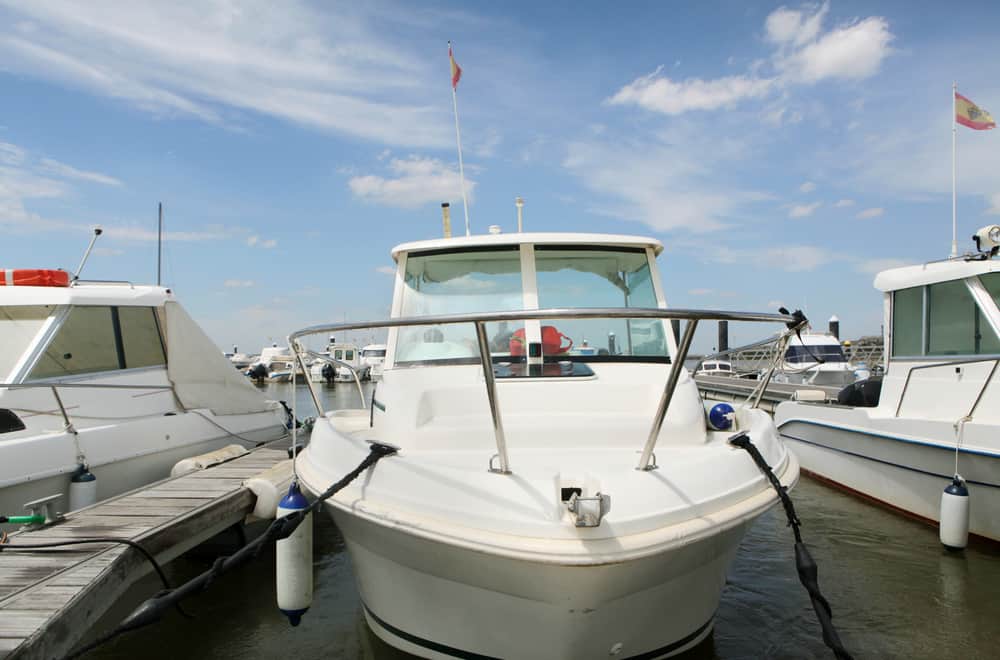
Night vs. month docking
Marina costs are typically two to even five times the cost of an average RV campground when you need overnight docking. However, marinas and local RV parks have similar monthly prices.
In most cases, you will need to pay $20 to $45 for transient moorings per night in the US, regardless of the boat’s length.
Marinas are often cooperative when staying a few days more than a paid week or month. They will charge you a daily rate based on the previous rate in most cases.
Unfortunately, some marinas will charge a higher rate for an extended period, so you need to be informed to avoid unpleasant surprises.
Long term docking
Many marinas are liveaboard friendly , and you can ask for long-term storage for discounted rates. There is no rule about pricing, and savings can be considerable or only a few percent.
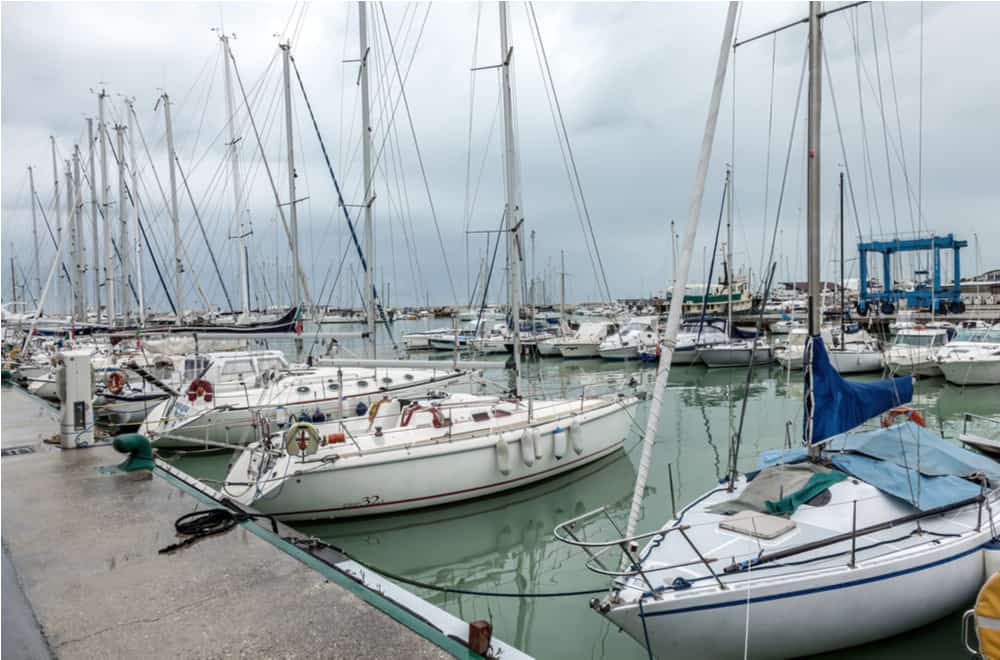
Once you start looking for a slip for docking in a marina, you should calculate a few things, like:
Docking or mooring – A mooring and anchorage are excellent options for you if you prefer getting privacy. On the other hand, docking is a more secure option.
Availability – Be aware that a few top-rated marinas have waiting lists, particularly at peak season. Therefore, you need to pay a waiting list deposit to get in. For instance, the famous Marina del Rey will charge $150 for that service.
Travel time – You should know in advance how long you want to travel. That will determine a marina location, significantly affecting the final price you should pay.
Marina accessibility – You should check on time whether a mooring is accessible at any time or at a particular tide time. The second option will significantly reduce costs.
Marina security – A marina should provide a security guard and controlled access to the docks to keep your boat safe.
Marina condition – It is crucial to check how secure is a marina you want to use. Therefore, you should know about large tidal waves or possible strong currents nearby.
Work policy – Many marinas won’t allow access to unknown people for possible professional service. You need to pick out one of their professionals to help you maintain or repair a boat.
Yacht club marinas – Always check whether a marina is within the yacht club. In this case, you need to become a member, which is typically expensive.
Additional charges – Besides regular marina fees, you need to pay a tax in some countries when using it for less than seven months.
Electricity will cost you $10 to $50 per day, and you should add $5 for the pump-out fee. Finally, you should pay a tip of $5 or $10 to a person who will catch the line and help you plug the boat.
Once you decide to purchase a boat, you should consider docking coast beside the vessel price. Berthing fees will depend on the berthing type, boat type and length, location, and season. The price range is wide, and you should expect to pay $80 or even $17,500 for this purpose annually.
Related posts:
- How to Find Free or Cheap Boats For Sale? (Step-By-Step Guides)
- How Much Does It Cost to Re-Gelcoat a Boat? (5 Facts)
- 7 Types of Boat Lights
- 42 Main Parts of Boat (Name & Terminology)
Leave a Comment Cancel reply
Save my name, email, and website in this browser for the next time I comment.

Discover Yacht Haven Marina: Your Harbor Haven
Nestled in the serene embrace of the East Basin in the Los Angeles Harbor, Yacht Haven Marina beckons. Our harbor is a secure sanctuary for boats of various sizes, providing a collection of 165 slips spanning from 30 to 65 feet.
Whether your vessel is grand or compact, Yacht Haven Marina guarantees safe anchorage and reliable protection. Here, you’ll find tranquility amidst the waterways, a place where your boating experiences flourish.
Curious about our location? Take a glimpse at our marina map by clicking here . Welcome to Yacht Haven Marina – where safety, serenity, and maritime enjoyment intertwine.
Excellent Value
*rate based on longer of boat or slip length
Prices shown are for payments in cash, check, Zelle or Venmo credit card payments are an additional 3.5%
Slip Rate Calculators
for your convenience
My Vessel is 25' - 30'
My vessel is 31' - 44', my vessel is 45' - 65', application.
- A copy of the current registration/documentation (must be in the name of the applicant).
- Insurance policy naming Yacht Haven as additionally insured and showing $300,000 liability coverage.
- A current color photo of vessel. Vessels over 20 years old must provide a copy of an out of water survey conducted within the past 24 months.
- A credit report to be run by the Marina for a $15 fee is required.
Information
Liveaboard is currently by waiting list only. Contact us for more information. No liveaboard slips currently available. Call about waiting list.

- Neither vessel nor any part of the vessel may project into the fairway more than 3 feet. Slips are assigned to accommodate vessels with no overhang except as permitted by the marina.
View Our Amenities
View our slip rates, what's around town, get in touch.
Pricing & Availability (Map)
- Launch Ramp
A selection of some of our available slips: (scroll down to view E Dock or F & G Docks )
E Dock
F & G Docks
Maps of each dock are available HERE .
If you wish to apply for an available slip, please submit a Berth Application . This is a representative sample of available slips, if the slip shown here is no longer available there is usually another, similar slip nearby that is. If you don’t see a suitable slip for your vessel, please contact the Harbor Office for current availability.
BERTH APPLICATION POLICIES
- Berth rate is based on actual overall length of the vessel (including all projections) or the berth, whichever is greater. Final rental amount will be determined when the boat arrives and is measured by marina personnel. Vessel overhangs are normally limited to two (2) feet or less.
- The security deposit will hold the slip for up to 30 Days after which the boater is responsible for the full berth rent. Reserving a slip for longer than 30 Days is at the discretion of the marina.
- All paperwork must be completed and fees & deposits paid upon move in.
Berthing Application


Mooring Fees for Narrowboats
- Residential Mooring
- Lakeland Leisure Boat Sales
- The Marina Cafe
- Around & About
- Charity & Partnerships
- Join our Team

Search Boats for Sale
Mooring Fees at Barton Marina, UK
Are you feeling overwhelmed by the maze and rise of canal boat mooring fees? You're not alone.
Many boat owners and enthusiasts struggle to navigate the ever-changing landscape of costs, regulations, and options, leaving them frustrated and uncertain about how to manage their expenses effectively. The sheer complexity can create a sense of unease, preventing you from fully enjoying your passion for canal boating.
We understand your pain and are here to help.
Mooring at Barton Marina couldn't be simpler.
Say goodbye to confusion and hello to a hassle-free boating experience. Dive in and discover everything Barton Marina has to offer for your ultimate mooring experience.
Make an Enquiry

Set in stunning surroundings
Located along the serene Trent & Mersey canal in the picturesque countryside of rural Staffordshire, near Barton-under-Needwood, lies Barton Marina.
With 300 berths nestled within the UK's enchanting network of canals, this marina provides a perfect spot for mooring your boat, catering to both leisure and residential purposes .
Each mooring at Barton Marina is equipped with electricity and water access, and controlled access to the jetties ensures peace of mind and security. Additional amenities include two washroom facilities featuring toilets and showers, along with a laundry service and workshop for essential maintenance and repairs.

Fully featured & loaded with facilities
Discover the unparalleled mooring experience at Barton Marina, where we cater to the needs of our boating community.
With 300 berths across five secure, pin-protected private jetties, you'll find the perfect spot for your canal boat, complete with electricity and water access.
Our commitment to your comfort includes two well-maintained washroom facilities with toilets and showers, and an on-site laundry facility for your convenience.
For your boating needs, Barton Marina offers a fully-equipped workshop, as well as essential supplies such as gas, coal, and diesel. Waste disposal is made simple with our pump-out and Elsan facilities.

Explore leisure & entertainment
Barton Marina is a lively destination for canal boat enthusiasts and visitors, offering a variety of independent shops, cafes, pubs, and restaurants.
Enjoy a hot cup of coffee at the Barton Marina Cafe or savour diverse dishes at the Waterfront pub and restaurant. Experience authentic Thai cuisine at the Thai Marina restaurant.
For movie buffs, the Red Carpet Cinema and cafe bar offer an intimate cinematic experience with delightful refreshments. Art lovers can explore Gallery Three, showcasing diverse works from talented artists. Don't miss the Butcher Baker farm shop for fresh, locally-sourced produce and artisanal goods.
Join us at Barton Marina for a vibrant and diverse leisure experience , perfect for boat owners and visitors alike.
Mooring Fees
Annual moorings are a 12-month commitment; any refunds will be calculated at the quarterly rate up to the termination date. All fees are inclusive of VAT at 20%.
Leisure Moorings
- Residential Moorings
Visitor Rates
Contact us today

Roam Free to any marina as an Annual Moorer
Opt for an annual contract and enjoy more than just a mooring space.
With an annual contract, you gain 24-hour access to your home marina and the opportunity to freely cruise the network with unlimited access to Lakeland Leisure Marinas*. Delight in visiting Saul Junction Marina in Gloucestershire, Tattenhall Marina in Cheshire, Roydon Marina Village in Essex, and Great Haywood in Staffordshire, which is just a day's cruise away—perfect for a weekend getaway.
Embrace the Roam Free scheme , designed to inspire exploration of the waterways while ensuring you have a home mooring. Experience both rural and city life at your leisure from the water, knowing that you have a secure mooring available.
* Availability may vary; please contact your destination marina ahead of your arrival.
Join the thriving community of happy boaters

“Fab Marina! Looked all day for Calor gas and was saved by the great Folks at Barton Marina. Dealt with the most charming, lovely lady, Julie, who left a lasting impression. Will defo visit again!”
Braz Harman, Google Reviews
“Lovely visit, farm shop is great. Dropped in to sort a mooring and staff were really pleasant”
Alan Taylor, Google Reviews
“A marina situated in a tourist destination! Love it! Great pub / restaurant - The Waterfront, a thai restaurant, and cafés. Great place for a walk around the lakes and parkland. For marina services, great friendly staff and sensible prices.”
Bob Penney, Google Reviews
“A very pleasant place to have a walk in the harbour or around the neighbouring ponds and then have a cup of coffee or a pint. Also some good utilities like a laundrette and Calor bottle swap.”
Karol Mileszko, Google Reviews

Don't struggle with rising Mooring Fees
Get in touch
Get in Touch
Barton under Needwood Burton upon Trent Staffordshire DE13 8DZ
Take Me To
- Privacy Policy
Lakeland Leisure Estates
- Camping La Bella Vista
- Deganwy Marina
- Great Haywood Marina
- Lakeland Leisure Estates Group
- Long Ashes Park
- Long Ashes Pure Spa
- Roydon Marina Village
- Saul Junction Marina
- Tattenhall Marina
- The Gamekeeper's Inn
This website uses cookies
We use cookies to personalize content and ads, and to analyze our traffic and improve our service.
Annual Moorage
Annual moorage information.
Coal Harbour Marina is Vancouver’s premier location for your saltwater moorage. We offer 242 berths ranging from 30’ to 330’. All annual tenants receive the following:
- Secure, sheltered cement floats protected by a triple breakwater system
- 24-hour staffing
- Dual security gate protection
- 16-camera video monitoring
UTILITY SERVICES
- 30A, 50A, and 100A Power services available
- Potable water
- Complimentary dockside waste removal services (restrictions apply)
We are currently full, but you can still apply for our waitlist. The following are our waitlist and administration fees:
- For boats that are 50’ and less: the deposit (refundable) is $10,000 with an annual $500 (non-refundable) administrative fee
- For boats that are 60’- 120’, the deposit (refundable) is $20,000 with an annual $500 (non-refundable) administrative fee
- For boats that are 120’ and above, the deposit (refundable) is $35,000 with an annual $500 (non-refundable) administrative fee
1. Moorage is calculated based on the greater of the Slip Length (SL) or “stem to stern” vessel Length Overall (LOA) – minimum charge of 30′. 2. Moorage will be calculated on a pro-rata basis for over-width vessels exceeding the maximum berth beam . 3. Pre-Payment of First + Last Month Moorage is required for Annual-Monthly Installment Payment Plan (subject to Marina approval). 4. Post-dated cheques or credit card payment pre-authorization is required for Annual-Monthly/Quarterly Installment Payment Plans. 5. Financing fees of 3.5% apply for credit card payments of annual moorage. 6. A Marina Services Fee (power provision & meter reading, water, sewage, waste & recycling, other) of $25 per month will be invoiced quarterly. 7. Electricity Consumption Cost Recovery Charges are calculated on individual usage and invoiced quarterly (due & payable within 30 days). 8. Vessel tenders and/or dinghies may only be stored on the Licensed Vessel – dinghies left afloat will be removed at tenant risk & expense. 9. Many slips are cable ready – contact Shaw Cable (604 280-8818). Telephone service connection may be available – please enquire. 10. Disposal of any oil/fuel product, antifreeze/engine fluids, boat renovation/repair materials or toxic substance within the marina is prohibited. 10. Recreational Vessel Moorage only. No live-aboard, chartering or commercial use permitted. 12. Coal Harbour Marina is staffed 24-hours. Administrative services available Monday – Friday, 9:00am – 5:00pm.
*Taxes applicable to Moorage & Electrical Connection charges

Start typing and press Enter to search
- Berthing Mooring Fees In Croatia And Greece
Find a Boat
Why book with us.
Competitive prices, Exceptional Service
ONLY Professional Charter Fleets
Rated 4.9/5 on Feefo
Super-low 25% deposit
Berthing / mooring fees in Croatia and Greece
How much does it cost to spend the night in a marina in Croatia, Greece, the Med and the Caribbean? We give you the lowdown!
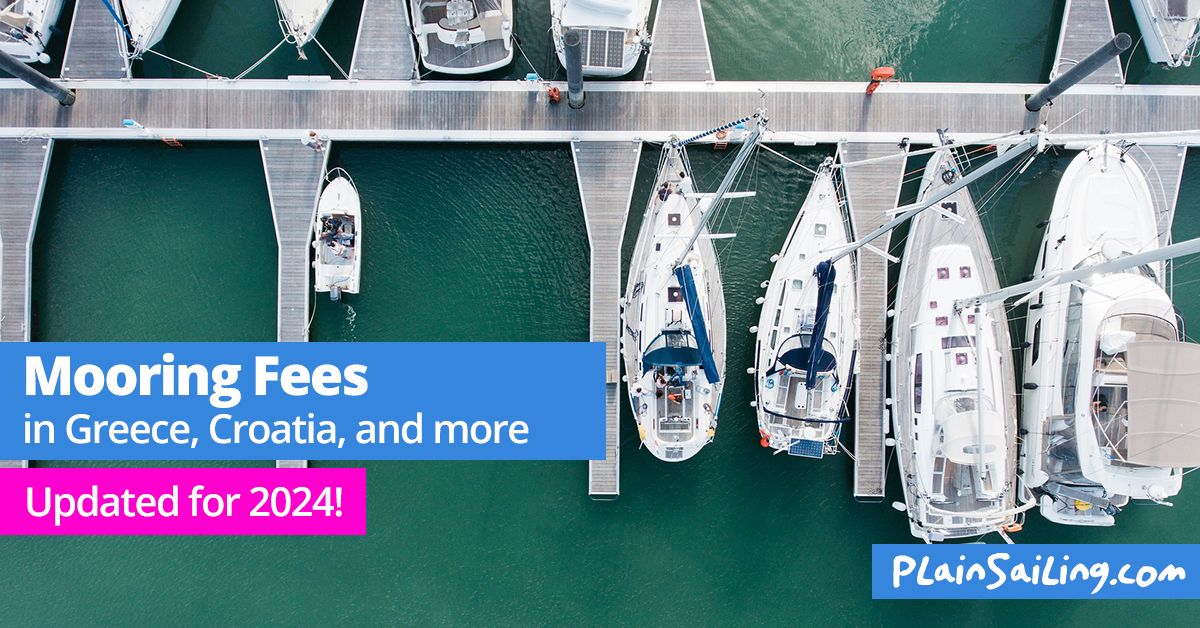
Last updated: April 2024
One of the things you’ll have to pay for during your charter is mooring or berthing fees – which are fees for staying in a marina or harbour overnight, and connecting to their electricity or using their water supplies, toilet facilities, ropes and pontoons.
Unfortunately, there is no easy answer to ‘how much will it cost us in berthing fees?’ because it depends upon where you are chartering, what you are chartering, as well as where you choose to stay, and prices vary massively - but what we do know is below.
The first and last nights of your stay will be at your home marina, so you won’t need to pay anything for these. Likewise, you can stay in anchorages for free (but obviously you won’t have access to electricity) – though be aware that they may charge you for a National Park pass if you overnight in one of a national marine parks - particularly in Croatia.
We also include some useful links for pre-booking your berth in the marinas online, which is a growing phenomenon - there is no real market leader at the moment, but things will improve in future years. Often it is best to search for the marina directly to see if you can book a berth online, or if it explains how or if you can book.
Be aware that marina bookings are often not cancellable or refundable, so it is potentially worth waiting until you know what the weather will be like before you spend the money and make a booking.
Click for more about berthing or mooring fees in Croatia , Greece , Italy , France , Malta , Montenegro , Spain , Turkey , England , Scotland , or the Caribbean
Berthing fees in Croatia
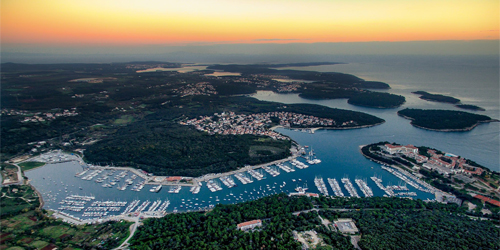
Since sail-tourism is still relatively new in Croatia, marinas are generally privately owned and reasonably modern. ACI - who, with 22 marinas, operate the largest chain of marinas in the whole of the Mediterranean, and covering much of the Croatian coast – were once owned by the state, but have since been sold to privatise investors.
ACI's relative monopoly (and recent investment or development costs) means that they drive the pricing in the market though, and you’ll find that prices in Croatia are substantially higher than in Greece.
SAMPLE COSTS
Mooring fees are charged by the night, and prices change depending on your location, the time of the season, and upon the length of your boat in metres (in the case of Catamarans, they also charge a supplement of up to 50-60% for the additional width of your boat).
The table below gives an idea of daily berthing prices for low and high season across the country. These are sample prices for 2024:
PRE-BOOKING A BERTH IN CROATIA
The Croatians are ahead of the game when it comes to pre-booking berths, and they better understand how marina-hopping sailing should work. However, most of their marinas are also pretty vast, so pre-booking isn’t essential (particularly outside of high season), and beware of booking too far in advance, as most pre-bookings have no cancellation policy, so you won’t get any refund if you can’t make it to the right marina.
Almost all marinas will allow you to pre-book a berth (to guarantee it is there for you at the end of the day) – many give the option to book online if you google their websites, including the ACI marinas website . Many marinas are also now listed on Marinareservation.com and there are a growing number of marinas which are click-and-bookable on the Navily App .
You can also use the new ‘My-Sea’ to book yourself a berth at any of the ACI marinas (or plenty of others in Croatia) from your smartphone browser or via their App – the prices seem to be about the same as if you go direct.
Berthing fees in Greece
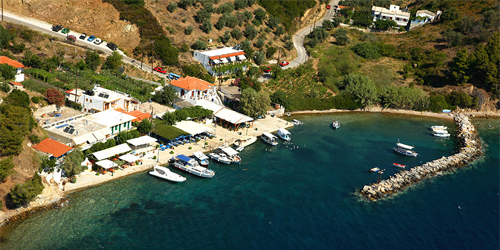
Marina and harbour facilities in Greece are different from Croatia because, with more islands and being further from the mainland, sailing is much more a part of the normal way of life on the Greek islands, and because things have built up over the years.
Whereas the Croats are seeking a return on their investment in developing the marinas over the recent years, the Greek infrastructure has been in place for many, many years, it serves locals as well as tourists, and they place greater value on the benefits to the local economy that a yacht in the marina can bring (with likely spending at the local shops, tavernas and bars) – consequently, the amount you’re charged for a berth with electricity and water is lower, and sometimes even free.
At the moment, whilst the Greek islands do have internet, there isn’t a great deal of information out there about marinas, what they offer, and how much they cost. Many of them – particularly the ones on the islands - are either free or there is a token charge of €20-30 a night. Of the larger marinas, here's some guide prices for mooring fees in 2024:
PRE-BOOKING A BERTH IN GREECE
The prevailing wisdom at the moment seems to be that people have been sailing in Greece for centuries and that they never needed to pre-book then, so you don’t need to pre-book now. Consequently, the Greeks don’t go out of their way to make it easy to pre-book a berth. Countering that, though, they will always try to find a space for you in their marina - even if it means tying onto another yacht - so pre-booking isn’t always necessary.
Online booking still isn't very big in Greece, but some marinas do now have websites, or if you can find a number to call, it’s probably best to phone the marina direct to try to pre-book.
Berthing fees in Italy
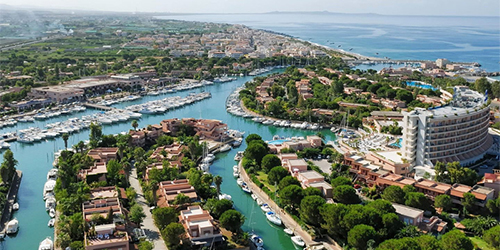
Italy has been undergoing something of a renaissance over recent years, and many of the marinas here have been evolved into grand coastal developments, boasting all the latest mod cons – including baby-sitting services, courtesy hire-cars, swimming pools and tennis courts – as well as myriad stunning marina-side apartments, with shops and leisure facilities open all year round for their wealthy owners.
As a result of all this investment, whilst the marinas are certainly much nicer places to stay, they’re also on the expensive side of the market. Of course, you would expect key marinas around the Amalfi coast, Capri and Ischia to be expensive, but even the smaller marinas on distant islands seem to charge premium rates.
Mooring fees below are charged by the night, and catamarans can expect to pay a surcharge for the extra width that they take up on the pontoon. The bigger, renovated marinas have excellent information online, but the table below gives a good sample of 2024 rates:
PRE-BOOKING A BERTH IN ITALY
The majority of Italian marinas have an online presence and it’s usually possible to book or request a quote online before you arrive, but they are almost all independently operated (so you have to go direct to the marina website), and there isn’t currently one single place to go to get berths booked - though there are a growing number of marinas which are click-and-bookable on the Navily App .
Berthing fees in France
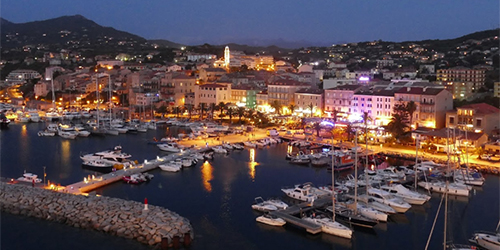
The set-up of marinas in France is markedly different to the rest of Europe, as the coastline is controlled by local regional councils, so, whilst there are huge private marina developments with five-star services, in most towns you will also be able to find a municipal marina, probably in not quite as glamourous a location, but for much more reasonable overnight fees.
Obviously the experience is slightly different, but it does make sailing more accessible and means that, for example, you can sail to Cannes and berth there for under €40. There seems to be no upper limit on how much you can expect to pay for the biggest boats in the best and best-located marinas, and F1 week in Monaco will set you back €1,500 a night, but you have to stay there for the full week, so you’re looking at €10,500 for 7 days.
We’ve gathered prices in the table below as minimum mooring fees per night. If mooring fees are an issue, it is worth shopping around and researching which marina to head to – many of the towns on the French Riviera have as many as five different marinas, all charging their own prices. These are some sample 2024 rates:
PRE-BOOKING A BERTH IN FRANCE
Similar to Italy, you can find most French marinas online, and the majority will allow you to send bookings or enquiries to the harbourmaster. There isn’t an over-arching one-stop-shop for berths in France (yet), so it’s worth contacting the marinas direct by email or telephone once you know where you would like to go.
Berthing fees in Malta
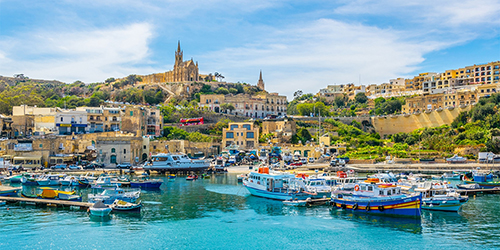
There aren't a vast number of marinas around the islands of Malta and Gozo (but there are plenty of beautiful anchorages), and whilst they are busier in August, they never get to the same level of 'busy' as the most popular marinas in, say, Greece and Croatia - in fact, most boats boats clamour for the best spots in the anchorages, like the blue lagoon instead of the marinas.
The prices below give an idea of the mooring fees per night in some of the marinas the area. Marina fees are not generally published online, but you should be able to contact the marina directly to get their latest rates. These are some sample 2024 rates:
PRE-BOOKING A BERTH IN MALTA
Similar to Italy and France, you can find contact details for many Maltese marinas online, and the majority will allow you to pre-book a berth by contacting them directly (but there is no over-arching app or website which will allow you to do this easily).
Berthing fees in Montenegro
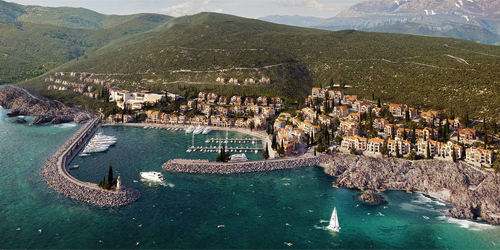
Montenegro is the new kid on the block as far as sailing goes. It only really started to take sail-tourism seriously within the last decade – but it really is taking it seriously: there are already four multi-billion-euro marina developments in construction (and more planned) to maximise the outstanding natural beauty of the area, and to build upon the increasing adventurousness of people who have now sailed in Croatia for a few years now.
To entice super-yachts, they have the world’s longest marina berth – capable of taking a yacht over 250m in length – and one of their marinas has a whole brand new village, town centre, six star hotels and even a golf course. At the moment, the marinas are more modern than those in Croatia, but priced cheaper to try and get people to try them out, on the basis that once you’ve sailed in Kotor bay, you won’t want to sail anywhere else.
The table below shows 2024 overnight rates at some of our favourite marinas in the country, including the mega-marinas of Porto Montenegro and Lustica bay. Catamarans can expect to pay a surcharge of 50-75% on top of this:
PRE-BOOKING A BERTH IN MONTENEGRO
There is no sole owner of all these marinas, so there is no single place to go to book yourself in. For the bigger, newer developments, you can usually book online, but the smaller, older marinas like Herceg Novi, Budva and Bar still largely rely on telephone calls to make a reservation, if you can make reservations at all.
Berthing fees in Spain
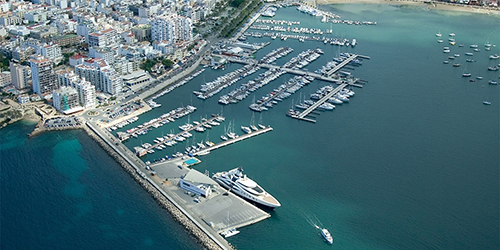
All boats are charged based on their square meterage (calculated as the length of the boat multiplied by the width or beam, and then all multiplied by a price per square metre) - so catamarans can expect to be charged an additional 80% on top of the prices for a yacht below.
Marinas are usually modern and comfortable, and now almost all have floating pontoons, which means that you don't have to wake during the night to tighten or slacken off ropes attached to the land in line with the latest tides.
The prices below give an idea of the mooring fees per night in some of the marinas in each area. In addition, there may be surcharges or meters for calculating water or electricity use. These are some sample 2024 rates:
PRE-BOOKING A BERTH IN SPAIN
Some Spanish marinas are now online, but the vast majority are not, and you will need to telephone or VHF them to ask about availability and to book a space. Most marinas are small independent marinas which are run by local sailing clubs, though some of the larger ones (particularly in the Canary islands) are operated alongside the town harbour (where they deal with ferry and cruise traffic as a priority).
Berthing fees in Turkey
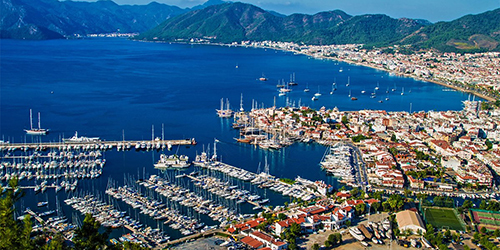
The prices below give an idea of the mooring fees per night in some of the big marinas in each area. These are some sample 2024 rates:
PRE-BOOKING A BERTH IN TURKEY
Most of the bigger marinas are online and will gladly take bookings either online, via email or over the phone. Restaurants will also accept bookings (usually by phone, unless they are particularly tech-savvy) - be sure to ask what time you need to be there by, as they do tend to try to fill up their berths and will only wait so long for you to arrive.
Berthing fees in England
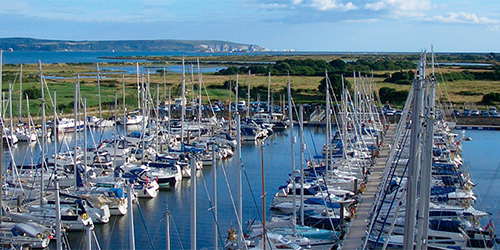
The prices below give an idea of the mooring fees per night in some of the marinas in each area. Most are calculated as a price per foot of length. These are some sample 2024 rates:
PRE-BOOKING A BERTH IN ENGLAND
Most marinas are now bookable online - just google the name of the marina you would like to stay at and book direct (there isn't a one-stop shop to book all the marinas in England, though there are now a number of marina chains which manage or run a number of marinas in the area, which makes things a little simpler).
Berthing fees in Scotland
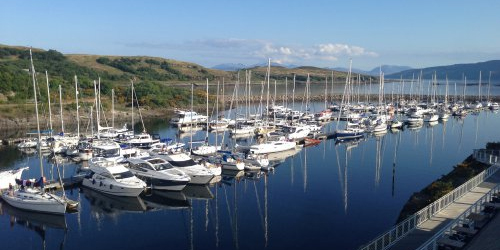
The prices below give an idea of the mooring fees per night in some of the marinas in each area. These are some sample 2024 rates:
PRE-BOOKING A BERTH IN SCOTLAND
The bigger, more commercial marinas are now bookable online, but smaller and more remote marinas - such as those in the outer Scottish islands - are more likely to accept bookings by telephone or email. Most like to know you are coming, but pre-booking is not usually necessary, as there is usually plenty of space for everyone.
Berthing fees in the Caribbean
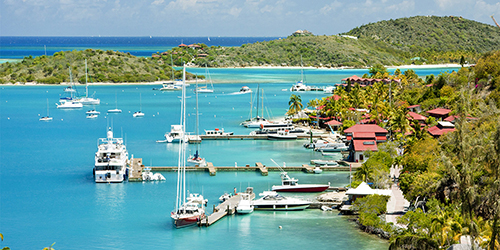
There is no set policy on pricing: whilst some remote marinas - such as Carriacou in Grenada - see their remote-ness as a reason to lower their prices (to encourage cruising sailors out to them), others - such as Hope Town in the Abacos - see it as giving them a natural monopoly, and inflate their prices accordingly.
Similarly, the standard of berthing facilities range from fairly basic to luxury, so it is worth doing a little research to check that you are heading to the sort of place and facilities you want to head to, and that they will charge the sort of prices you would like to pay.
In very high-season (December and March / April) it is usually worth pre-booking a space, and even mooring buoys can be pre-booked online.
We’ve gathered prices in the table below as minimum mooring fees per night. These are some sample 2024 rates in Antigua, the Bahamas, BVIs, and Grenada:
PRE-BOOKING A BERTH IN THE CARIBBEAN
As you might expect, Caribbean marinas are a mixed bag and can be difficult to book. Whilst some are bookable online, others are difficult to find even contact numbers for you - including the ones in big resorts, where the marina can often be there mainly as something for the holiday-makers to enjoy having views over or condo's nearby, as opposed to operating as a marina in its own right. In the BVIs, you can pre-book mooring buoys with Boatyball.com .
Tags: Marina fees Croatia; Marina fees Greece; Marina fees Italy; Marina fees France; Marina fees Malta; Marina fees Montenegro; Marina fees Spain; Marina fees Turkey; Marina fees England; Marina fees Scotland; Marina fees Caribbean; Berthing in Croatia; Berthing in Greece;

Slip Rates US Dollars
Prices include all taxes, water and internet.
Rate for multihulls is 1.5 x the rate for monohull vessels
Vessels over 44 feet must pay for all electricity consumed.
(all prices are in us dollars).
Facebook Yacht Port Cartagena
Twitter yacht port cartagena, google+ yacht port cartagena, youtube yacht port cartagena, tel: +34 968121213 vhf channel 9.
Online booking
Marina location
Cartagena weather
Mooring fees
VAT, T5 tax and B0 tax not included. Monthly fees shall be payable in advance. Free Wi-Fi internet access for boats on “LONG STAY RATE” and only for two devices. Free parking space for one vehicle. Taxes and supplies price increases to be applied at the same moment and in the same quantity as done by corresponding authorities and company suppliers.
‘Major sticker shock’: Harbor Commission ships 300% mooring rent hike proposal to Newport Beach City Council

- Show more sharing options
- Copy Link URL Copied!
Over the objections of many audience members, the Newport Beach Harbor Commission voted unanimously during its regular meeting Wednesday to recommend a 300% increase in rents for public moorings to the City Council.
The mooring rental rates have not changed since 2016. The commission began taking a new look at that revenue stream in 2021 on the behalf of the council and has held several meetings on the topic.
For the record:
10:46 a.m. April 12, 2024 A previous version of this story stated the previously proposed rates would be $20 per linear foot monthly for on-shore moorings and $10.50 to $23.25 per linear foot for off-shore moorings. Those rates have been adjusted to be $7.71 per linear foot for on-shore and $7.77 to $17.78 per linear foot, depending on the length of the mooring, for off-shore monthly, if approved.
Commissioners propose an increase in monthly rents to $7.71 per linear foot for the city’s 478 on-shore moorings, up from the current rate of $1.67 per linear foot. The monthly rent for the city’s 731 off-shore moorings would be raised to a range of $7.77 to $17.78 per linear foot, depending on the mooring length, up from the current rental fee of $3.35 per linear foot. The proposed new rates were arrived at after Netzer and Associates prepared an appraisal report.
Revenue generated by the mooring rentals goes toward the city’s tidelands fund, which finances the city’s harbor department, maintenance and enhancement of the tidelands, environmental protection initiatives and support of public access and recreational activities, according to Ira Beer, vice chair of the Harbor Commission.
In a presentation Wednesday night, Beer said the increase prevents the subsidizing of individuals using public land — in this case, water — and “ensures that mariners mooring vessels over public tidelands pay an equitable amount for the privilege of accessing their vessel while enjoying the use of these valuable and limited resources.”
Beer noted the city’s general fund is compensating for a $4.6-million deficit in the tidelands fund for the 2023 fiscal year.
Beer reiterated statements made in February by Harbor Commission Chair Stephen Scully that the city needed to implement a rent hike after a 2007 Orange County Grand Jury report found Newport Beach was undercharging boat owners for mooring permits.
Beer maintained the exponential increase would only reach current market values.
“While a 300% increase does seem very substantial ... mooring rates have seen only one adjustment over the past 20 years, and that was pulled back in 2016,” Beer said. “Subsequently, the only rate adjustments that have been applied did not even keep up with the [consumer price] index as they are limited to not exceed 2% annually.”
Beer noted the increases, if approved by City Council, would not go into effect until the start of 2025 and would be phased in over the course of five years to meet the target goal.
The City Council is expected to consider the matter in early summer, city spokesman John Pope said Thursday.
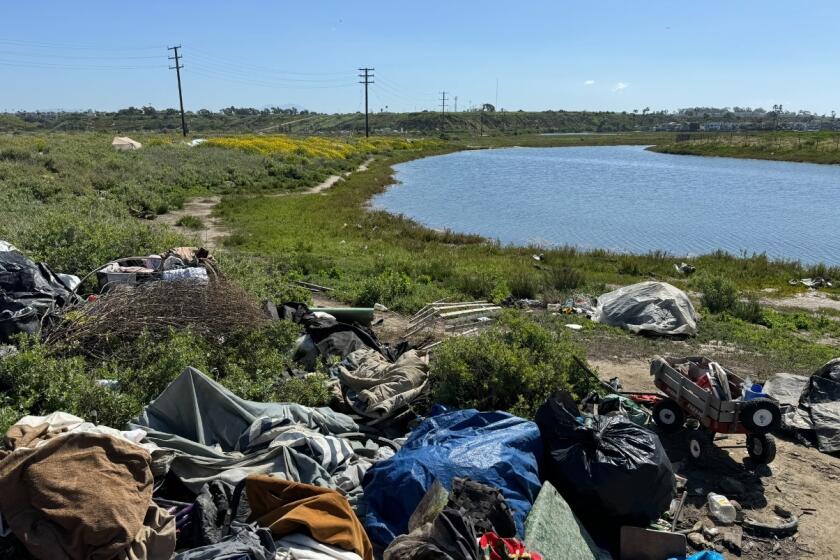
Encampment cleanup near marshlands on track, county supervisor’s office says
Supervisor Katrina Foley’s deputy chief of staff, Alyssa Napuri, said Foley’s office has been in discussion with residents from Newport Beach for over a year about the issue of homeless people living on the marshlands.
April 10, 2024
Speakers who addressed the commission during the public comment portion of the meeting called on the panel to review an alternative appraisal commissioned by residents instead of relying on the report by Netzer and Associates. They perceived conflict of interest because Netzer is involved with the Newport Aquatics Center, but the city has denied such a conflict. Opponents to the rate hikes also noted some of the commissioners have boats and private docks attached to their homes, which some viewed as an additional layer of conflict of interest.
One boat owner and Newport Beach resident of 12 years, Jake Pollgreen, told the commission that owning a boat in the harbor had been a dream while he was growing up in Chino Hills.
“[Vice chair] Beer, you mentioned the runway of five years as though to soften the blow,” Pollgreen said. “That alone just shows that you yourself believe this to be a little hard for us to take, and then you’re saying, ‘Oh, we got to do it, but let’s make it a little easier for them.’ There’s been a lot of numbers and talks and quotes from other meetings that I have not attended, so I do rely a lot on the trust here from these other members [of the audience], but this just bums me out.
“Maybe one day I’ll have a dock with a nice boat on it and not have to pay certain amounts, but at this time and at this rate, I will eventually be forced out of it, and you’ll force a lot of us out of [the harbor].”
Others described the rates that came from the appraisal as “comparing apples to oranges,” as it referenced public moorings in other cities like San Diego, Monterey, Morro Bay and Santa Barbara, which offer services that Newport Beach moorings do not. Newport Harbor users have access to public facilities but do not have private utilities included with the moorings.
Prior to the vote, Commissioner Don Yahn said he heard and felt a lot of the pain from mooring permit holders, saying the decision was not made lightly.
“I know [the increases are] difficult, and I know that it will affect the livelihoods of those in this room,” said Yahn. “And since the rates haven’t been adjusted for decades, we’re talking about major sticker shock. I have read all the materials. I have done my homework. I’ve read and checked with other cities and our city staff. I’ve made phone calls, talked ... to appraisers, the [state] land use commission and many yacht clubs. I don’t think it’s a money grab.”
Several who will be affected by a hike in rates, which include both recreational boat owners and those who live aboard their boats, said they are disappointed in the decision and the “inevitability” they feel they are facing.
Chris Benzen, who rents a spot for his boat at one of the public moorings, said he believes the City Council will likely approve the increases. He is hopeful Council Chambers will be packed at the time of the hearing, but he expects the issue will ultimately land in court.
“We’ll issue a legal letter, then if they approve [the rent increases], file for injunctive relief and let the courts decide on these perceived conflicts of interest. It’s unfortunate that we have to sue our city,” Benzen said. “I don’t take lightly wasting taxpayer dollars, but [the city] is wasting taxpayer dollars by pushing this through even with all the information I’ve provided them with ample time. The citizens, I hope, do not place the blame on us.
“We’re just trying to protect our interests but also to hold the city accountable. We can’t get answers from the Harbor Commission. We can’t get answers from the City Council or get the city attorney to step in. We tried the California State Lands Commission, the lieutenant governor, [Rep.] Katie Porter, [state Sen.] Dave Min, [Assemblywoman] Diane Dixon — we tried everyone. The only arbiter of justice, at this point, is going to be a judge.”
On Thursday, Jessie and Mike Fleming, who have a live-aboard boat in Newport Harbor, said they’ve heard from neighbors who say they probably will move out or sell their boats.
“We’re all very disheartened. Some people said they’re going to be able to hold on for a few years, but once it got up to a certain rate that they’d have to leave,” said Jessie Fleming. “But, this is our neighborhood. It’s our community.”
All the latest on Orange County from Orange County.
Get our free TimesOC newsletter.
You may occasionally receive promotional content from the Daily Pilot.

Lilly Nguyen covers Newport Beach for the Daily Pilot. Before joining the Pilot, she worked for the Orange County Register as a freelance reporter and general assignment intern. She earned her bachelor’s in journalism at Cal State Long Beach. (714) 966-4623.

Newport Beach homeowner shoots, injures intruder, 2nd suspect found dead, police say

Man pleads guilty in attacks on jewelers in Costa Mesa and Yorba Linda
April 15, 2024

Former Marine gets 9 years for Costa Mesa Planned Parenthood attack

Daily Pilot e-newspaper: Sunday, April 14, 2024
April 14, 2024
What's the Cheapest Mooring in London? (3 Surprising Places)
You might be surprised to know that there are a few hidden gems around London that offer some of the cheapest mooring rates in the city. In this article, we'll introduce you to three of these places where you can moor your boat, either permanently or just for the weekend, without spending too much.
Limehouse Waterside Marina offers mooring for as little as £15–£20 per day, while Little Venice in West London is a popular spot for Dutch barge owners and offers mooring for as little as £12 per day. Another option is the Brentford Dock Marina, where visitor mooring rates only range from £15 to £20 per night.
Besides the mooring fee, there are other expenses associated with mooring a boat in London, such as electricity and water usage, pump-out services, insurance, and even council tax. Let's discuss each one below and how they add up to the overall mooring costs.

15 of the Most Fun Sailing Towns in the UK (and why)
- While there are places that offer cheap mooring rates in London, living aboard your boat can still add to the overall costs. It's best to do your research and consider factors such as your boating style and preferred pace.
- The cheapest mooring rate is offered by Little Venice in Central London, plus it comes with a picturesque view of the city.
- The good thing about mooring spots in London is that they all offer basic amenities such as electricity, water, and waste disposal. They also have tight security measures, and most of them are located near transport lines and main roads.

On this page:
Three places with the cheapest mooring fees in london, breakdown of mooring costs in london, facilities and services at mooring spots in london, is mooring in london for you.
Here is a table of the three of the cheapest mooring spots in London and their mooring costs:
The Limehouse Waterside Marina offers various mooring options
If you're looking for a permanent waterside living spot, the Limehouse Waterside Marina has residential mooring rates starting at just £9,000 per year , which includes water, electricity, and Wi-Fi.
For leisure moorings, the rates start at £2,500 per year, and for winter moorings, the rates start at £2,000 for a 6-month stay. For visitor moorings, the rates range from £15 to £20 per night, depending on the size of your boat.
Limehouse Waterside Marina is a popular mooring location in London for several reasons. Firstly, it is located in a prime location, just a short distance from Canary Wharf and the City of London. This makes it an ideal location for those who work in these areas, as well as for those who want to enjoy the many attractions that London has to offer.
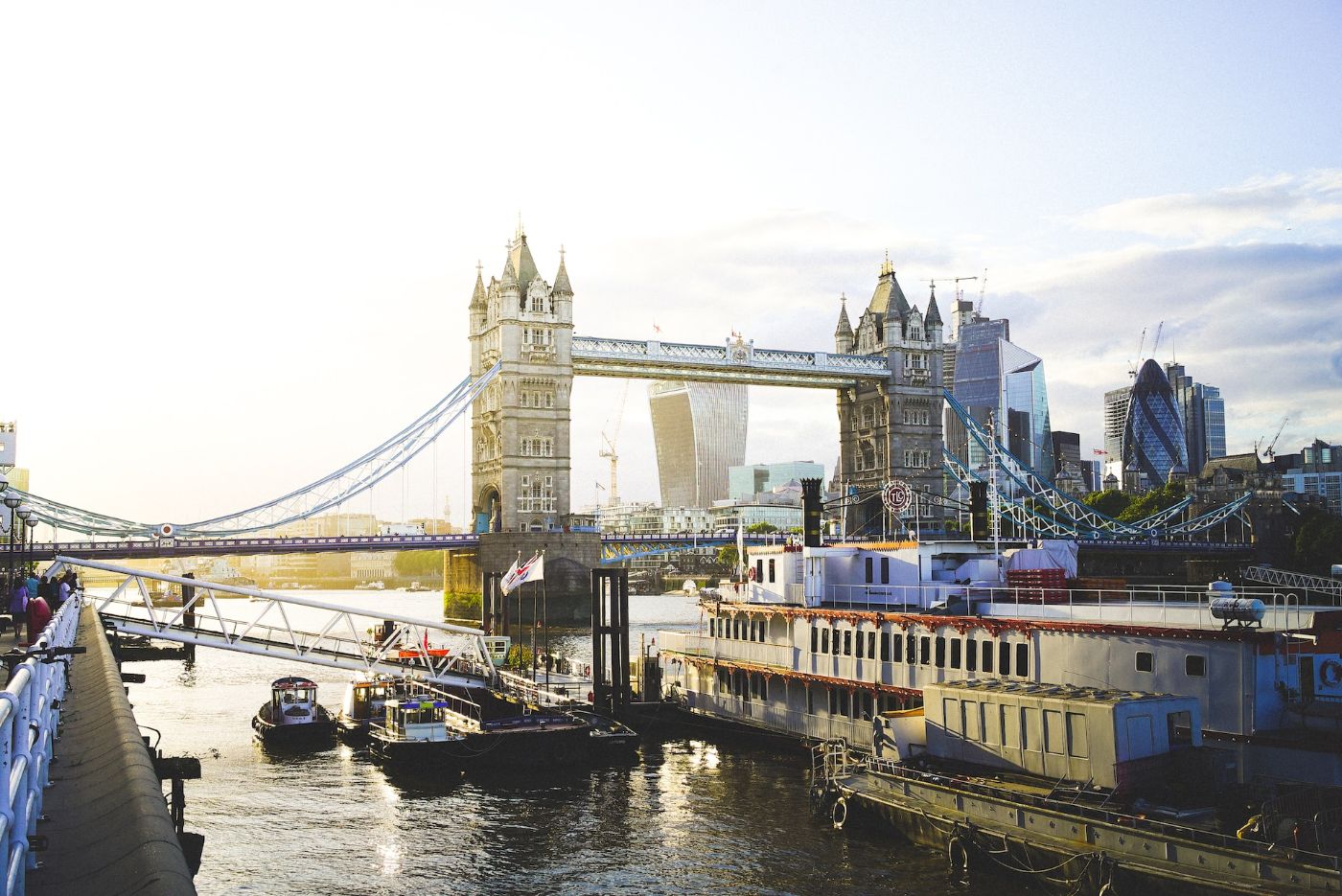
Secondly, Limehouse Waterside Marina is a modern and well-maintained marina, with excellent facilities and services. It has 24-hour security, CCTV, and on-site staff to ensure the safety and security of boats and their owners. The marina also has electricity, water, and pump-out facilities, as well as a fuel station and a chandlery.
Thirdly, Limehouse Waterside Marina is situated on the Limehouse Cut , a historic waterway that connects the River Thames to the River Lea. This provides boaters with easy access to the River Thames and the many waterways of London and beyond.
Lastly, this marina is surrounded by a vibrant and diverse community, with a range of shops, restaurants, and pubs nearby. This makes it a great place to socialize and meet other boaters, as well as to explore the local area.
The Brentford Dock Marina offers some of the cheapest mooring spots in London
Brentford is a suburb located in West London that offers some of the cheapest mooring spots on the River Thames. The Brentford Dock Marina is one such spot that offers affordable mooring options. The marina offers mooring for as little as £10 per day, and they also offer long-term mooring options for those who need it.
Their residential mooring rates start at £5,000 per year, which includes water and electricity. They also offer a 20% discount for continuous cruisers who stay for more than 6 months. For leisure moorings, the rates start at £2,500 per year, and for visitor moorings, the standard overnight mooring charge is £20 per night.
Brentford Dock Marina is a popular mooring location in West London for several reasons. Firstly, it is situated in a tranquil and picturesque location, surrounded by green spaces and nature reserves. This makes it an ideal mooring location for those who enjoy a peaceful and relaxing environment.
It is also situated on the Grand Union Canal , one of the longest canals in the UK, providing boaters with easy access to a wide range of waterways. This makes it a great location for those who want to explore the many canals and rivers of the UK.
However, before sailing through the different channels, you might want to make sure that your boat will fit the canals. For this reason, you may read this article to find out the average canal lock size in the UK.
This marina is also closely located to a number of transport links, including the M4 motorway and several train stations, making it easy to access from other parts of London and beyond.
The Little Venice offers cheap mooring rates with breath-taking views
Little Venice is a picturesque waterway in central London, and it's one of the best places to moor your boat. It's a great location for boaters who want to explore the city and enjoy its nature. The rates for mooring in Little Venice are some of the cheapest in London, making it an ideal destination for budget-conscious boaters.
The cost of mooring in Little Venice is around £10 - £12 per night per boat, which includes access to electricity, showers, and water. If you're a continuous cruiser, you can moor for up to 14 days in a 28-day period. After that, you'll need to move your boat to a different location.
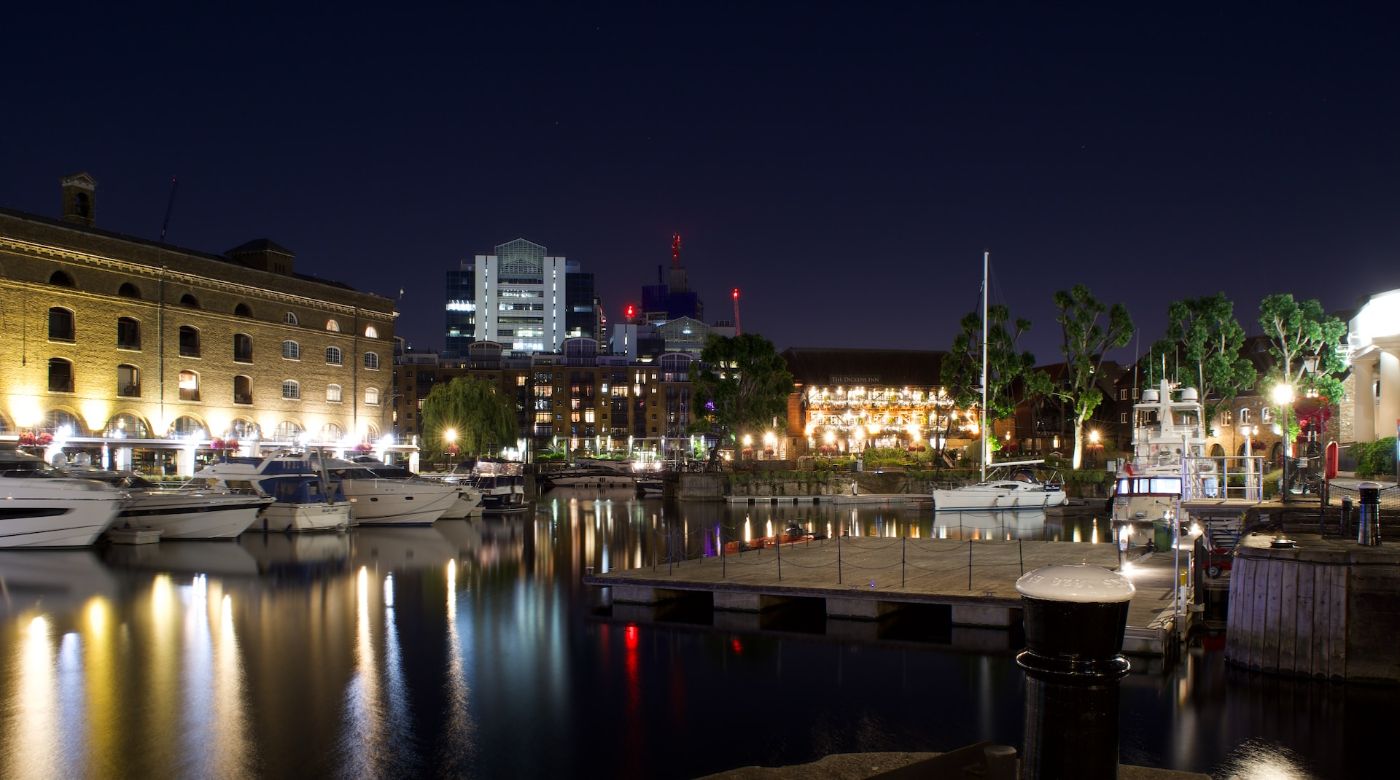
In addition to mooring fees, you'll need to pay for storage if you want to leave your boat unattended for more than 48 hours. The cost of storage is £8 per day. You'll also need to pay a £20 deposit for a key to the lock that secures the mooring.
There are many reasons why you should choose Little Venice as your mooring location. First of all, it's a beautiful and peaceful area that's close to the city center. You'll be surrounded by nature, and you can enjoy a relaxing stroll along the canal. It's also a great location for boaters who want to explore London's many attractions.
Another advantage of mooring in Little Venice is the cost. As mentioned earlier, the rates are some of the cheapest in London. You'll get access to electricity, showers, and water, which can save you money on other expenses.
When it comes to mooring your boat in London, there are a few costs to consider. These include:
- Mooring fees: The cost of renting or purchasing a mooring spot.
- Electricity: The cost of using electricity to power your boat.
- Water: The cost of using water for your boat.
- Pump-out: The cost of emptying your boat's waste tank.
- Council tax: The cost of paying council tax on your boat if it is your primary residence.
- Insurance: The cost of financial protection that helps cover the costs associated in case of damage to your boat, theft, or liability for any accidents that may occur.
The cost of each one is estimated as follows:
The total estimated cost for mooring a boat in London can reach up to £3,520 - £19,025 per year, depending on boat size, location, and usage.
To know more about the costs of different mooring types in the UK, you can read this article .
When choosing a mooring spot in London, one of the many things you may want to consider is the facilities and services that are available to you. Here are some of the things you can expect at mooring spots in London:
All mooring spots in London have basic amenities
All mooring spots in London offer basic amenities such as electricity, water supply, and waste disposal facilities. Some spots may also provide gas and fuel services for your boat.
Security measures are very tight in mooring spots in London
Security is a top priority at mooring spots in London. Most mooring spots have CCTV cameras and security personnel to ensure the safety of your boat. Some mooring spots also have gated entrances and require keycard access for added security.
Mooring spots in London are placed near public transport and main roads
Mooring spots in London are conveniently located near public transport options such as the underground and bus stops. Some mooring spots also offer bike racks and cycle paths, making it easy for you to get around the city.
Lymington, a town in England, can easily be accessed via direct rail links to London Waterloo, making it an ideal location to take a break from the city.
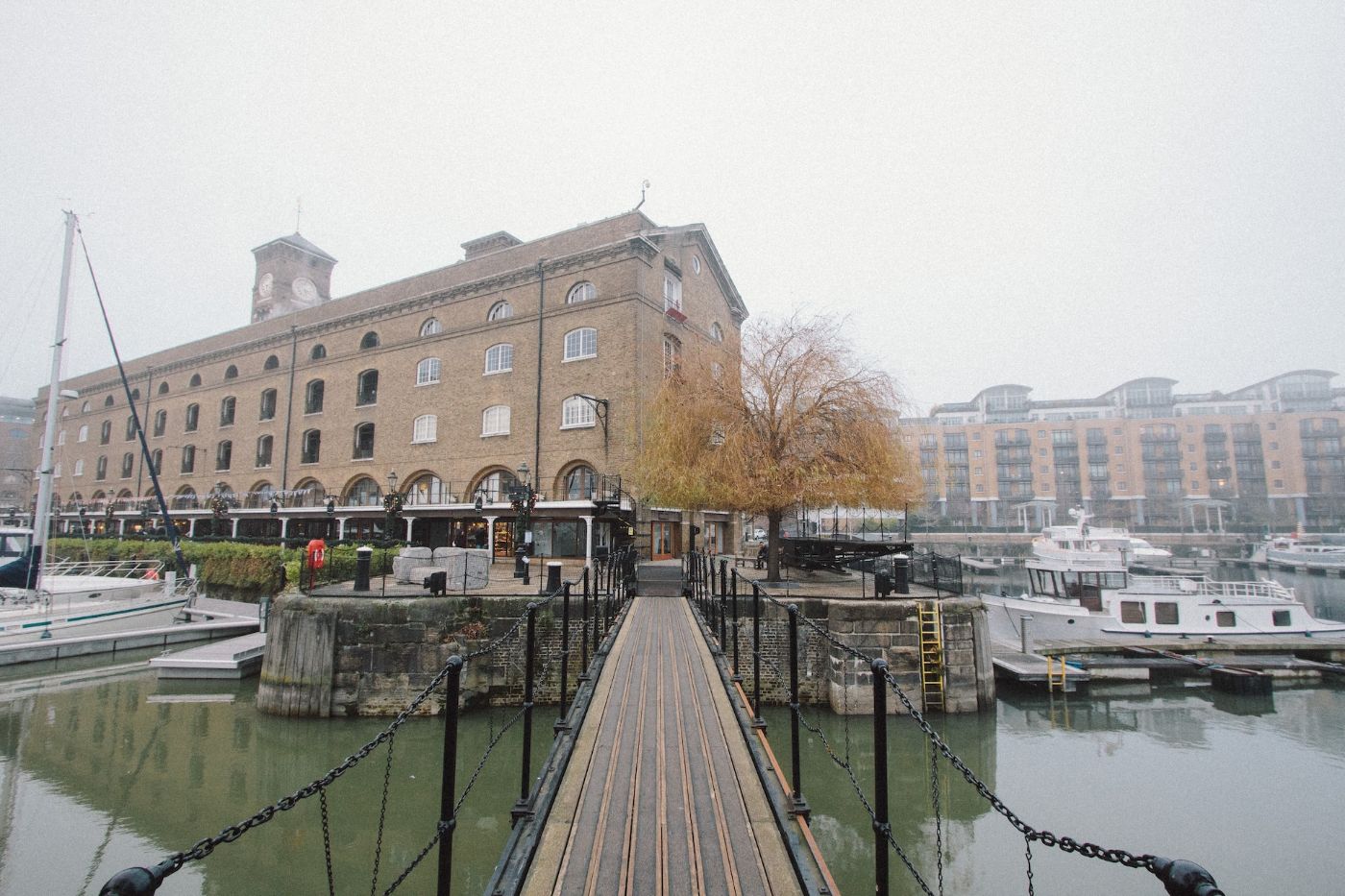
Now that you know about the three surprising places with the cheapest mooring in London, you may be wondering if mooring in London is for you.
First, you may need to consider your boating style. If you are a continuous cruiser, you may find it challenging to find a permanent mooring spot in London. However, if you can establish a home mooring, you can enjoy all the benefits of living on the water while still being close to the city's amenities.
Second, you may want to think about your pace. If you are looking for a quiet and peaceful spot, you may want to consider mooring outside of central London. However, if you enjoy the hustle and bustle of city life, you may prefer a mooring spot in the heart of London.
You might also need to consider the cost. While the three places we've mentioned offer affordable mooring options, the cost of living on the water can vary depending on your location, boat size, and lifestyle.
Living on the water can be a unique and rewarding experience, but it's not for everyone. If you're considering mooring in London, take some time to research your options and consider your boating style, pace, and budget. With the right information, you can make an informed decision and enjoy all that London's waterways have to offer.
Leave a comment
You may also like, what are the cheapest mooring fees in the uk (& where).
Boat mooring fees in the UK often vary depending on factors such as boat length, location, and market demand. If you're looking for the cheapest options, we're here …
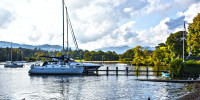
How Much Is It to Dock a Boat in the UK? (5 Boat Types)

How Much Does it Cost to Dock a Boat for a Year?

Average Canal Lock Size: UK, the Netherlands, France
Own your first boat within a year on any budget.
A sailboat doesn't have to be expensive if you know what you're doing. If you want to learn how to make your sailing dream reality within a year, leave your email and I'll send you free updates . I don't like spam - I will only send helpful content.
Ready to Own Your First Boat?
Just tell us the best email address to send your tips to:

IMAGES
VIDEO
COMMENTS
In Croatia, yacht berthing or mooring fees range between €435 - €1050 / m per year (€145 to €350 per ft.) for a high season contract. Greece annual fees are between €225 - €525 / m per year (€75 to €175 per ft.). Monaco is one of the most expensive destinations. A berth in Monaco costs about €1500/ m per year. Country.
On average, the mooring fees for a narrow boat in a private marina can range from £1,500 to £3,000 per year. However, some marinas charge significantly more than this, particularly in popular tourist destinations or areas with high demand for mooring spaces. It's important to note that the fees charged by private marinas can vary ...
An average sailboat costs between $800 - $1,800 per year. The price depends on location, season, and length of the boat. On average, a dock slip in the US costs anywhere between $12/ft per year to $240/ft per year, with an average of roughly $50/ft per year. Renting a spot at a marina is called 'renting a slip' or 'renting a berth'.
For the same 25-foot boat, a slip in a marina can cost $3000-$4000 for the summer season. In warmer climates like South Florida, many marinas offer year-round rates. Some Florida marinas charge by boat's linear foot for each month, so the same 25-foot boat slip can cost $18 to $22 per foot per month.
The cost of mooring varies from location to location, and boat mooring rates are determined by the facility, amongst other factors. The prices of these moorings are determined by various charges. Such charges include license fees, mandatory insurance payments, mooring fees, and additional costs.
Planning for yacht docking and mooring fees is key to managing your yacht's expenses. We'll guide you through understanding the costs associated with different types of dockage, marinas, and mooring fields. Learn how location, yacht size, and amenities can impact pricing. With our advice, you can budget effectively for these fees and choose the best options for your yacht's home base without ...
The yearly cost of docking for regular sailboats starts from $800 to $1 800. A dock slip can cost from $12 to $240 per foot every year. The average is around $50. Docking fees for boats vary due to their length, location, and season. Learn more of the crucial details by reading this article.
Navigating the open waters demands more than just the thrill of the journey; it requires the mastery of a fundamental skill—boat mooring.Whether you find yourself at the helm of a sleek yacht, a versatile pontoon boat, or any other watercraft, the art of securing your vessel isn't just about tying knots; it's about ensuring safety and cultivating peace of mind amidst the undulating waves.
The monthly fee to dock a boat is roughly $500 a month on average in the US. Prime locations can range up to $1,000 a month or more in average prices for a dock slip. Small towns usually have some of the best dockage fees. The cost to dock a sailboat varies based on many factors. Have you ever wondered what the average boat slip cost is for ...
Mooring involves securing a boat to a fixed structure such as a wharf, buoy, or jetty. It is essential to understand the basics of mooring and the different techniques and types of anchors to use. Choosing the right mooring spot is crucial to ensure the safety of the boat. Factors such as water depth, wind, and current should be considered when ...
Miami, Florida. $5/ft. $23 to $24/ft. $42/ft. Even docks in the same city have different fees. For example, docking a boat in Yacht Haven Marina in Los Angeles is $10.50 to $12.95/ft a year. On the other hand, Marina del Rey in the same city will charge $192 and $240/ft per year. The same is overseas.
Yes. No. Terminal 91. (206) 787-3751. [email protected]. For all Maritime commercial rates refer to Terminal Tariff No. 5. Select any filter and click on Apply to see results. Back to Top. The Port of Seattle offers many different facilities and options for your moorage needs throughout the Seattle area.
The mooring fees in Turkey range from €10-€20 per night for a 10-meter boat. Some of the popular marinas in Turkey include Gocek Marina, Marmaris Yacht Marina, and Setur Antalya Marina. Additionally, there are also many anchorages and bays where you can moor for free or for a small fee.
45′ - 65′. $13.50/foot. Liveaboards (2 persons max) Waiting List Only. $250 - $300. *rate based on longer of boat or slip length. Prices shown are for payments in cash, check, Zelle or Venmo credit card payments are an additional 3.5%.
Berth rate is based on actual overall length of the vessel (including all projections) or the berth, whichever is greater. Final rental amount will be determined when the boat arrives and is measured by marina personnel. Vessel overhangs are normally limited to two (2) feet or less. The security deposit will hold the slip for up to 30 Days ...
Discover the unparalleled mooring experience at Barton Marina, where we cater to the needs of our boating community. With 300 berths across five secure, pin-protected private jetties, you'll find the perfect spot for your canal boat, complete with electricity and water access. Our commitment to your comfort includes two well-maintained washroom ...
For boats that are 60'- 120', the deposit (refundable) is $20,000 with an annual $500 (non-refundable) administrative fee. For boats that are 120' and above, the deposit (refundable) is $35,000 with an annual $500 (non-refundable) administrative fee. JOIN WAITLIST. Annual Moorage Rates.
In Croatia, yacht berthing or mooring fees range from €60 per night for a smaller yacht in low season, to €160+ per night for a larger yacht in high season. Catamarans can expect to pay an additional 50-60% on top of that, too, meaning marina fees of €200 per night. Since sail-tourism is still relatively new in Croatia, marinas are ...
Ship Length Short Term (Per Foot, Per Day) 1-7 days Short Term (Per Foot, Per Day) 8-14 days Monthly Rates (Per Foot, Per Day) 101-119′ $5.00: $4.00: $2.00
Private marinas offer mooring fees starting at £2,000. Some of them offer competitive pricing and flexible options. For example, Littlehampton Marina in West Sussex prides itself on offering reasonable rates for their moorings. Annual fees for long-term moorings can range from around £2,000 to £10,000 or more.
With over 30 years of boat building experience under their belt, Robertson and Caine have launched over 1,000 yachts and are one of the top catamaran builders in the world. Innovative designs include catamarans ranging from 39 to 58 feet capable of sailing the world's most exotic sailing grounds, as well as the award-wining Leopard Catamaran ...
Any length. EUR 0.40 per kWh. EUR 0.40 per kWh. EUR 0.40 per kWh. VAT, T5 tax and B0 tax not included. Monthly fees shall be payable in advance. Free Wi-Fi internet access for boats on "LONG STAY RATE" and only for two devices. Free parking space for one vehicle. Taxes and supplies price increases to be applied at the same moment and in the ...
The monthly rent for the city's 731 off-shore moorings would be raised to a range of $7.77 to $17.78 per linear foot, depending on the mooring length, up from the current rental fee of $3.35 per ...
For leisure moorings, the rates start at £2,500 per year, and for winter moorings, the rates start at £2,000 for a 6-month stay. For visitor moorings, the rates range from £15 to £20 per night, depending on the size of your boat. Limehouse Waterside Marina is a popular mooring location in London for several reasons.
The Department of Marine and Ports Services, Boats and Moorings section reminds boat owners and mooring licensees that registration started on 1 April 2024, and the deadline for licensing renewals is midnight Wednesday, 31 May 2024. The 2025 decals must be placed by 1 June on all moorings and boats. Mooring licenses not renewed as of 31 May will incur a late fee.